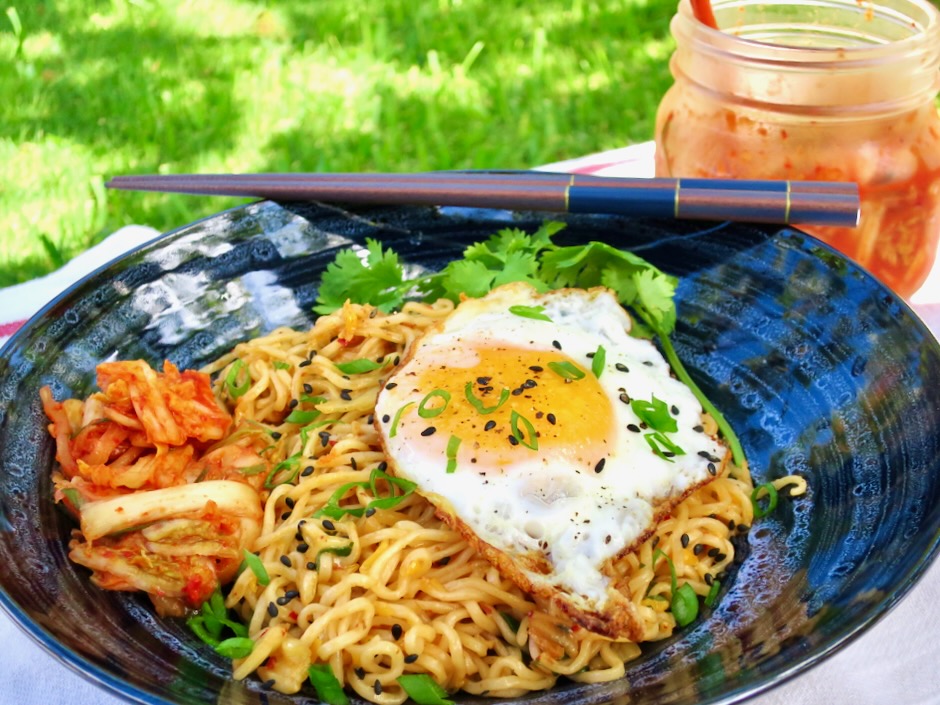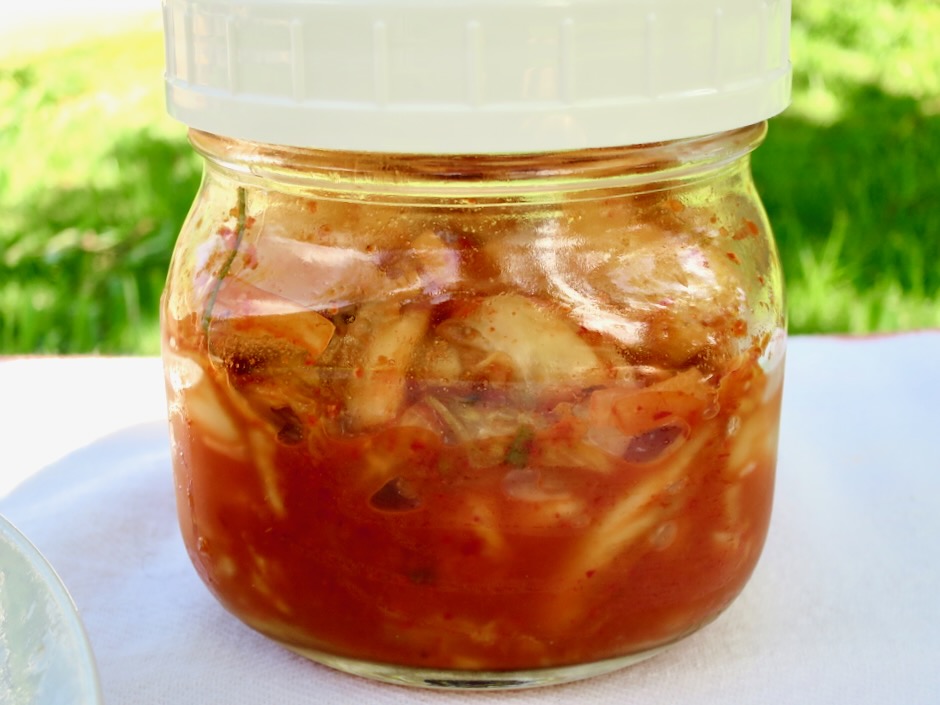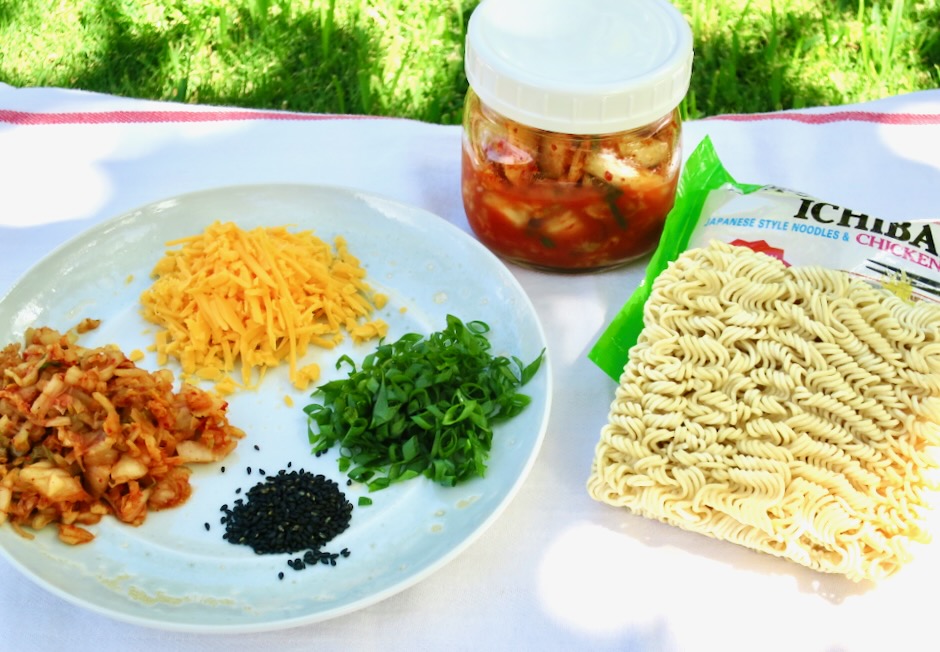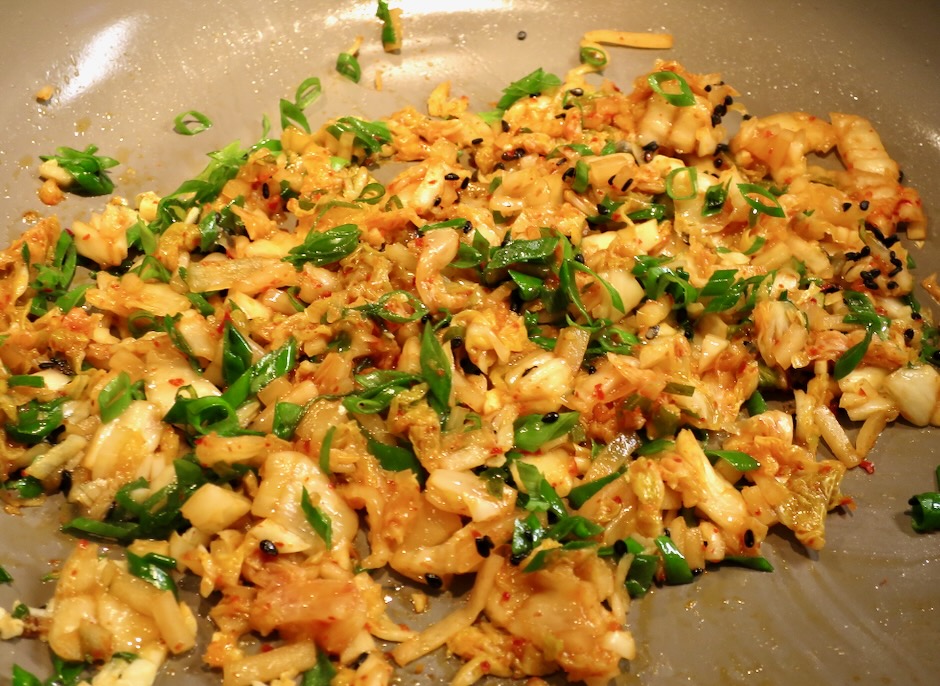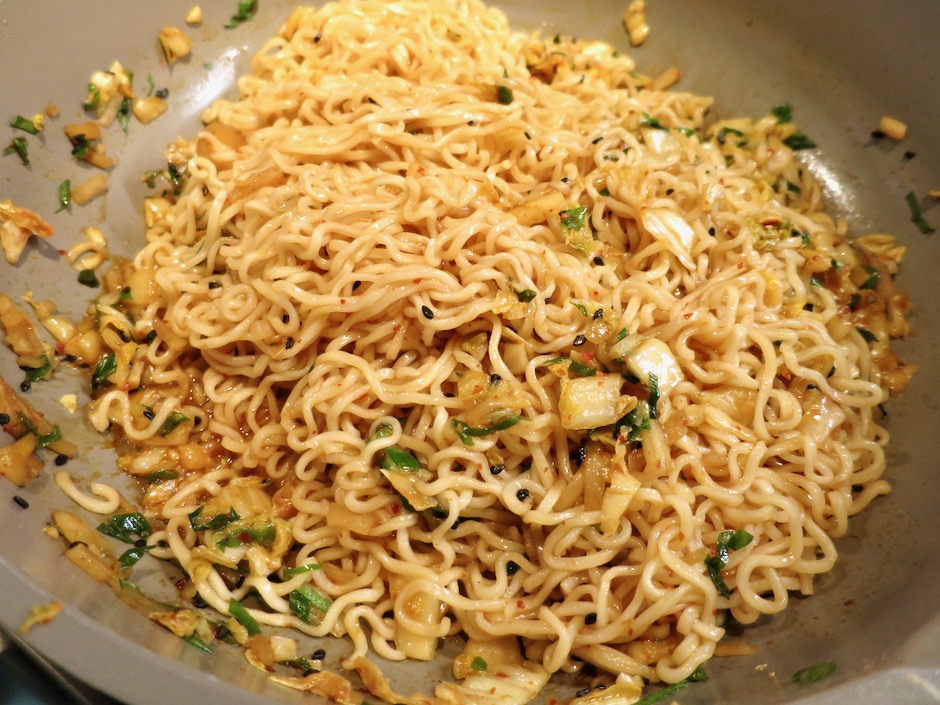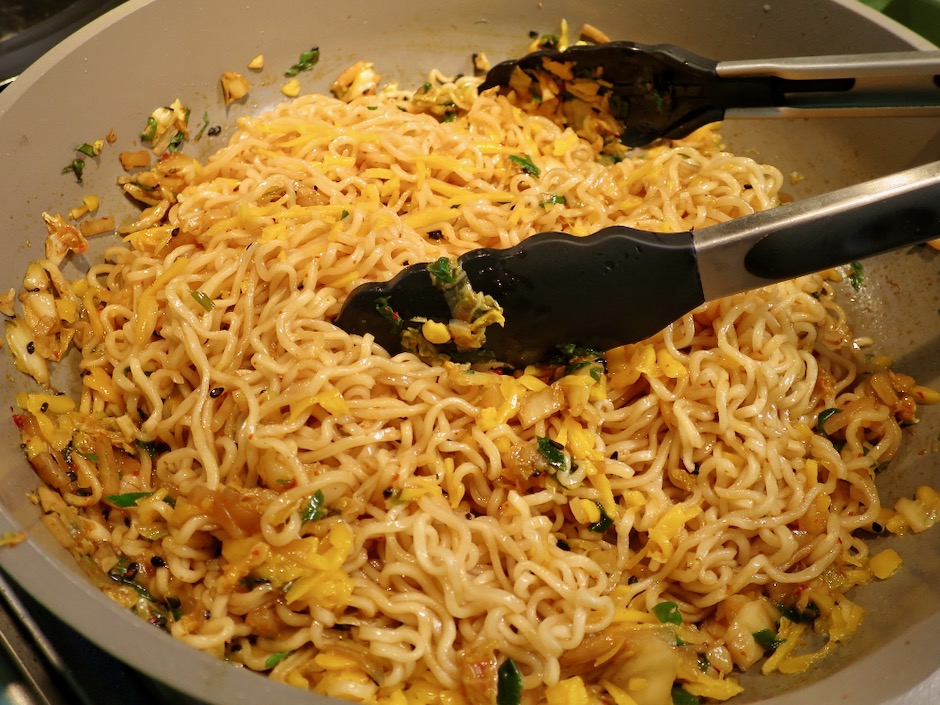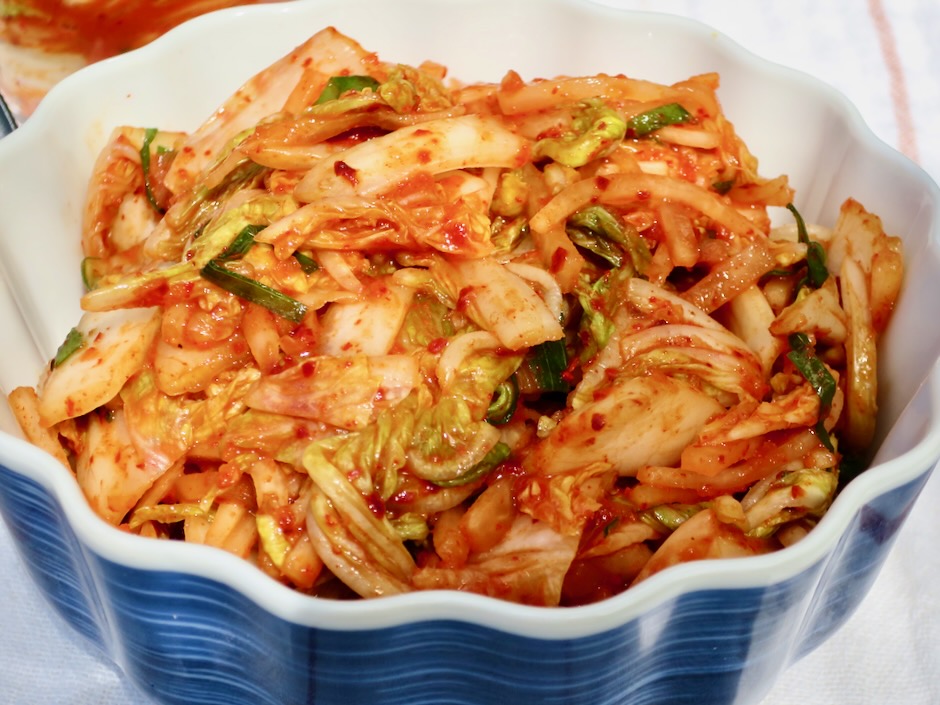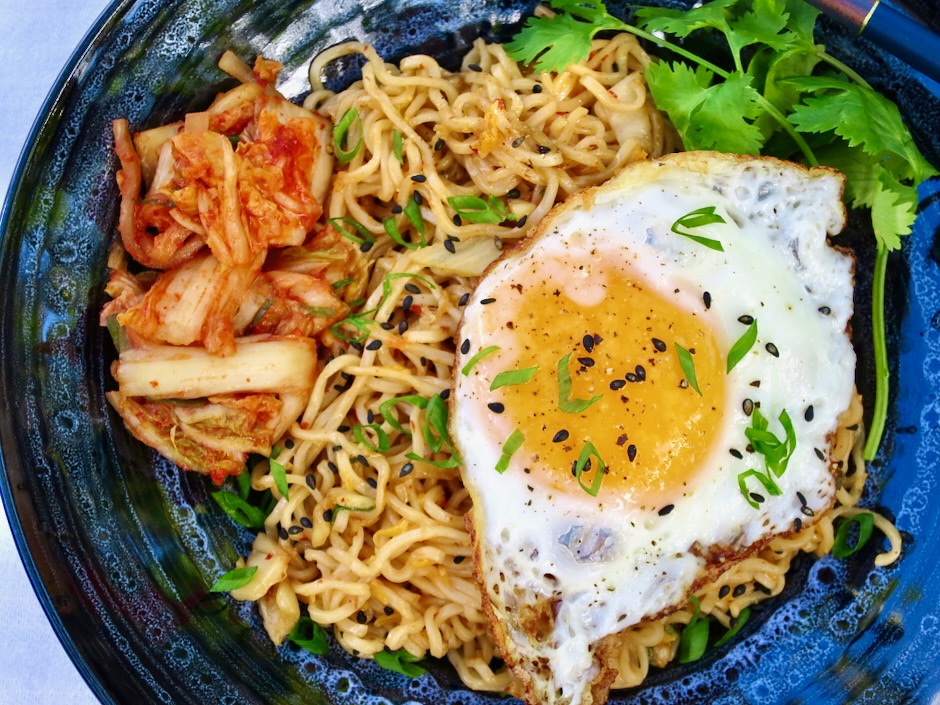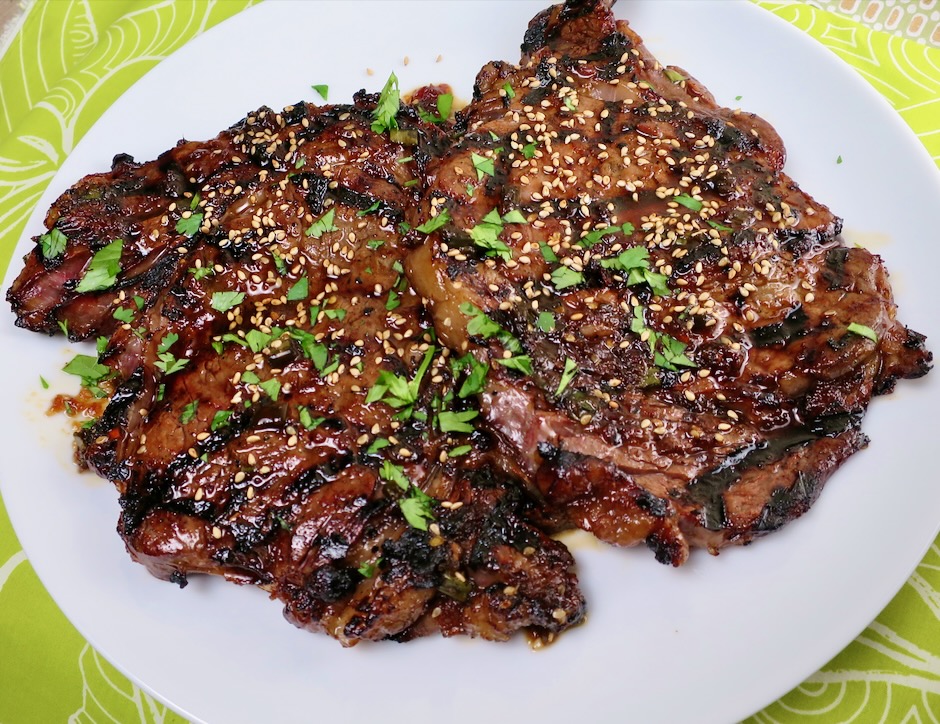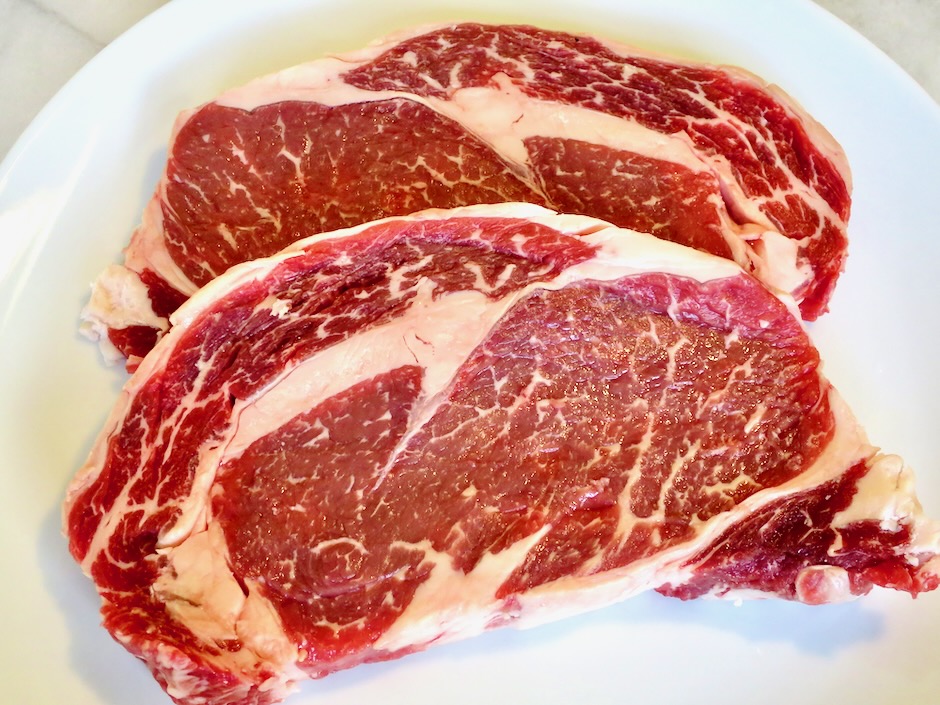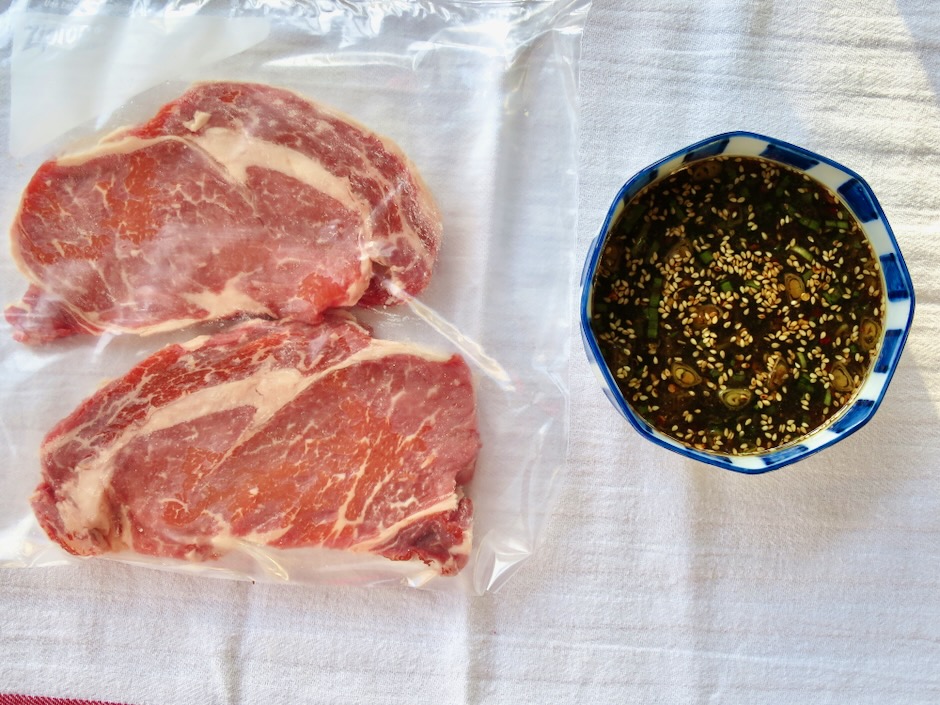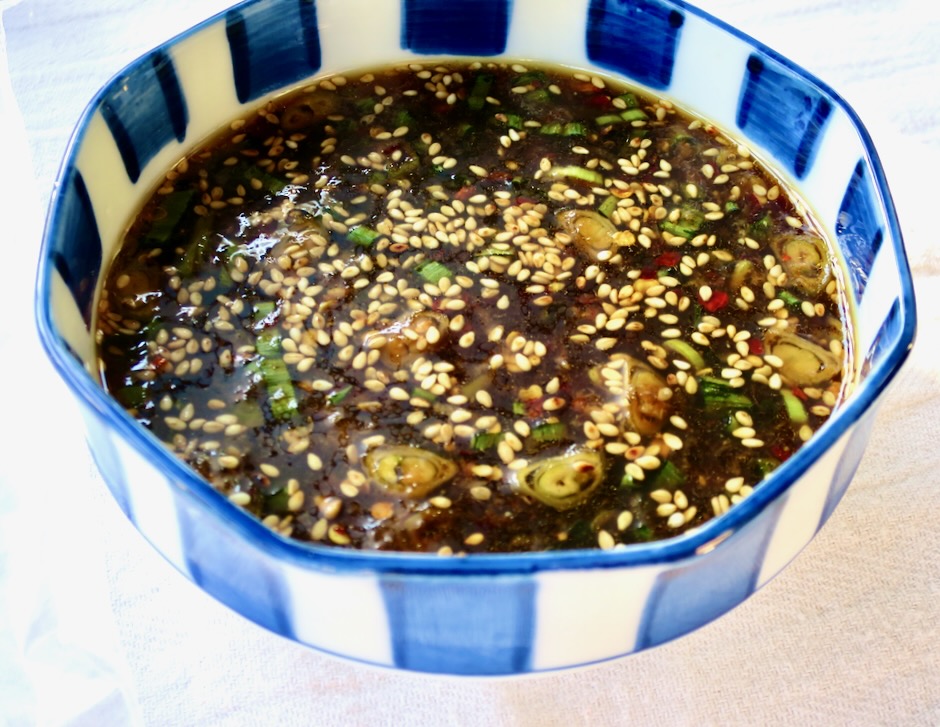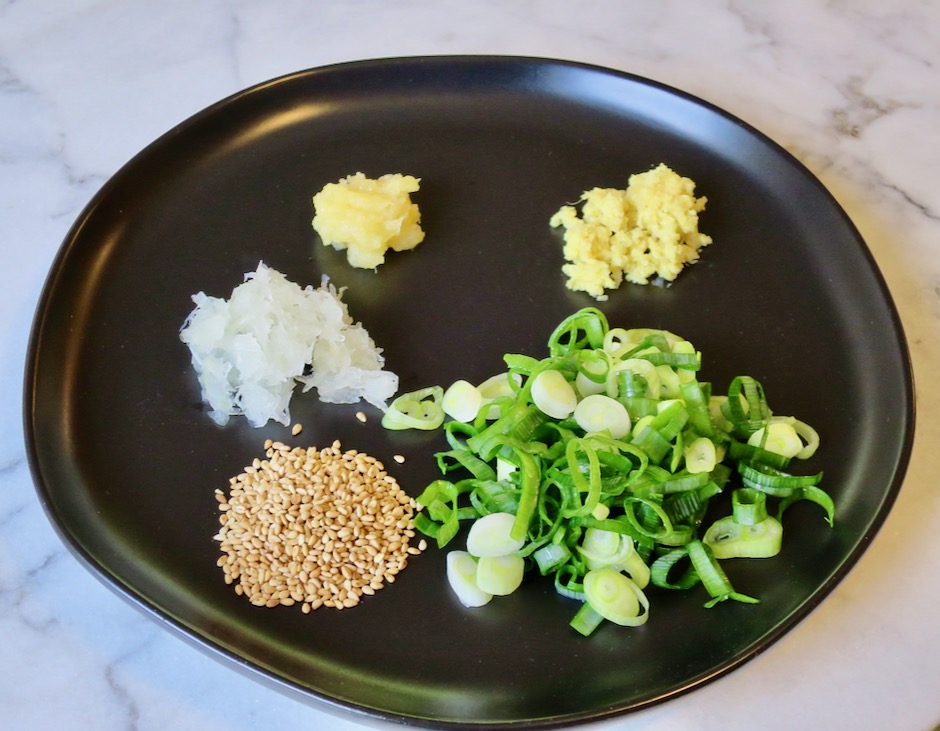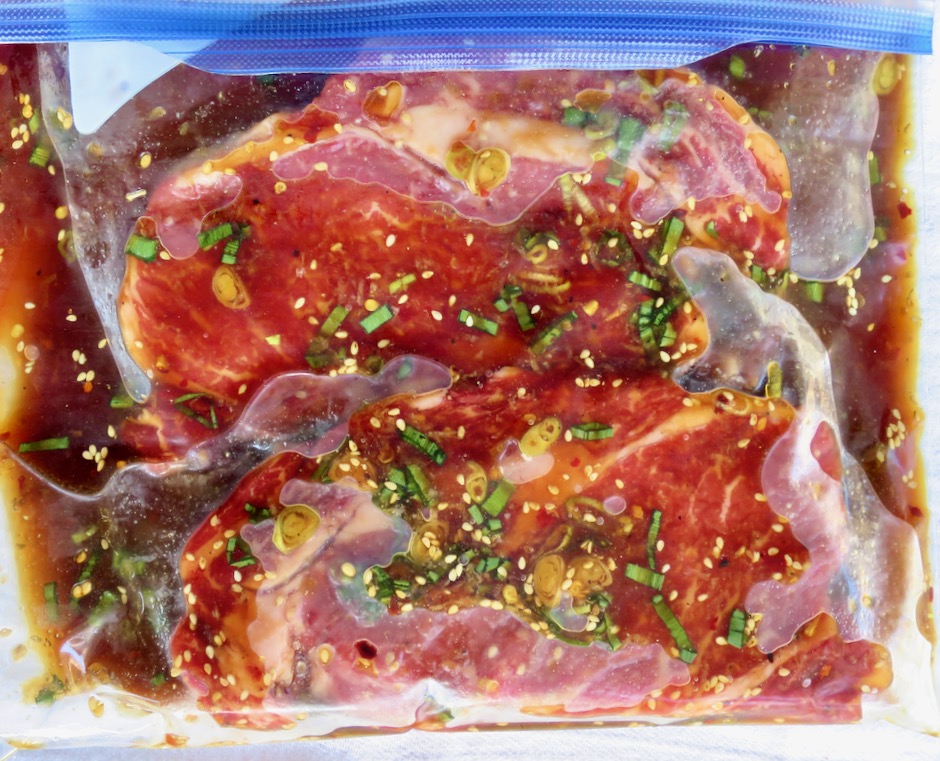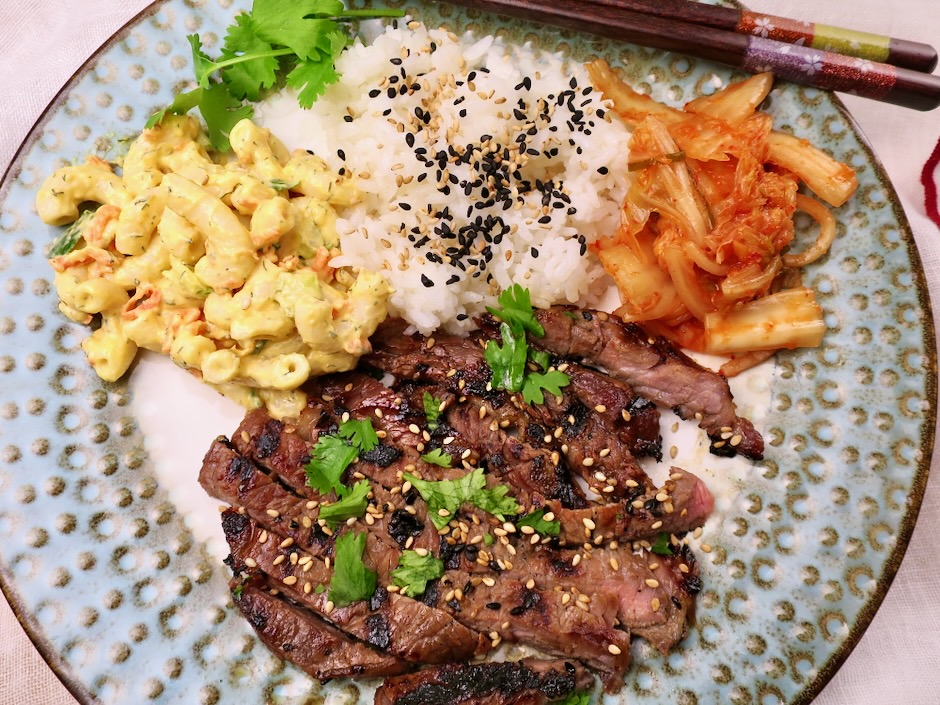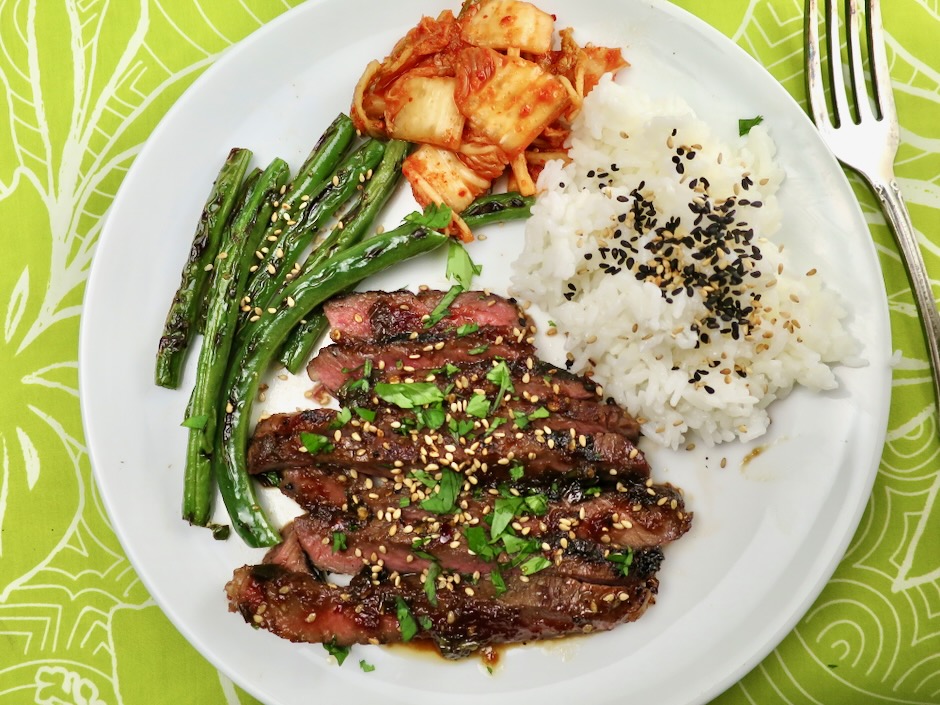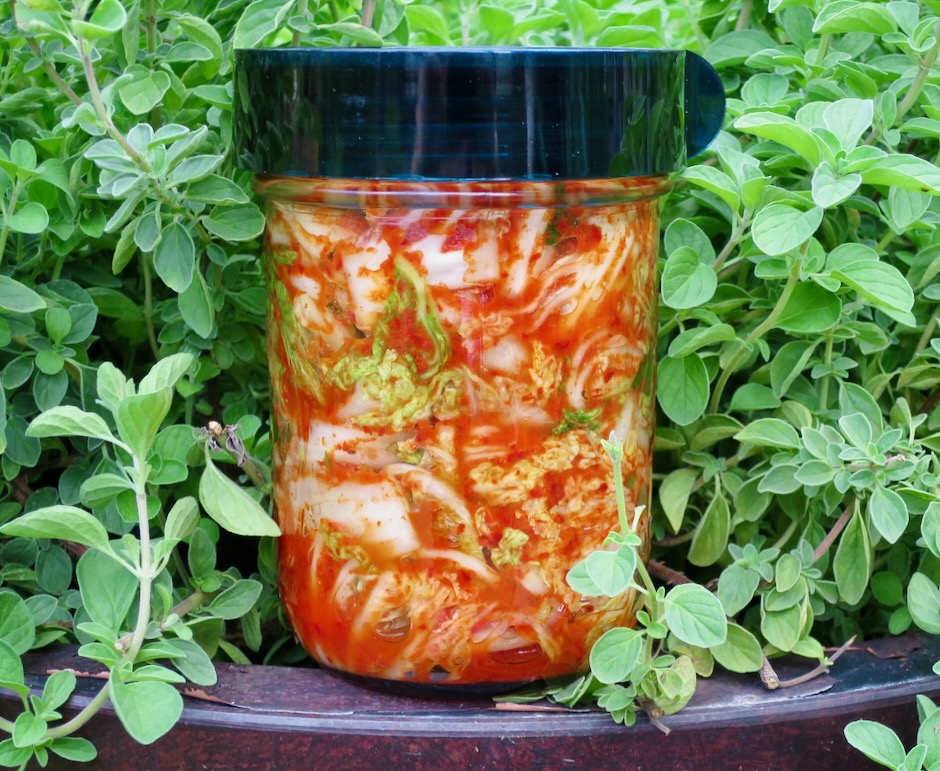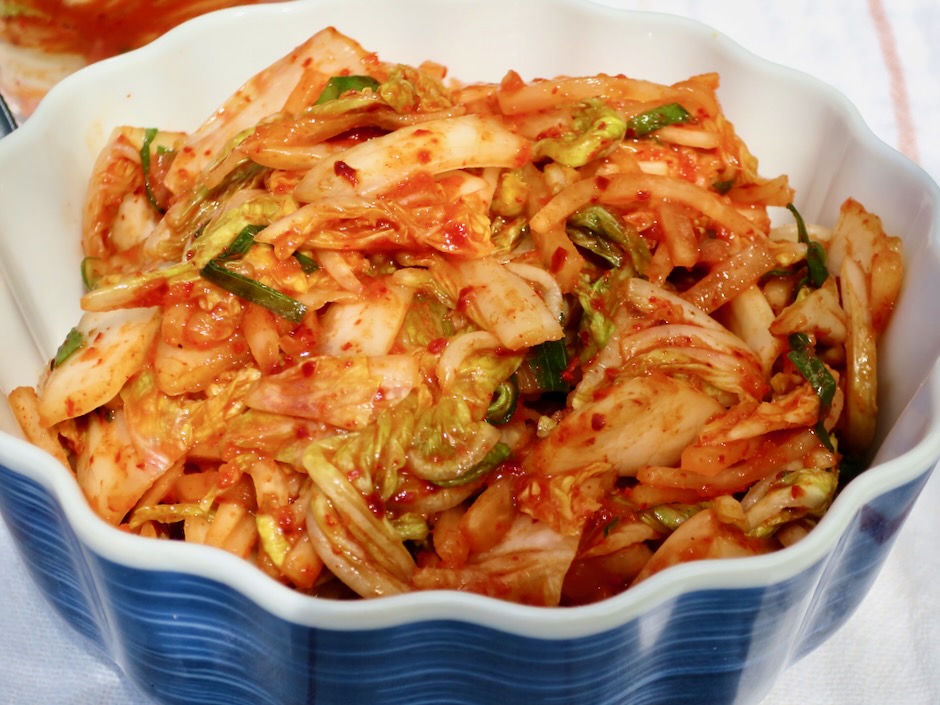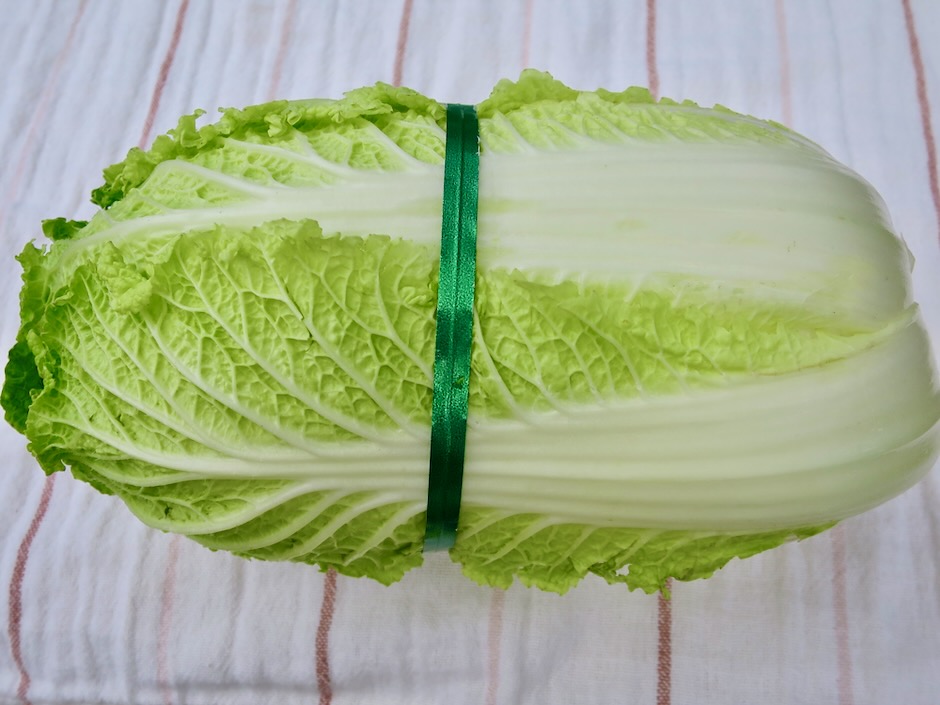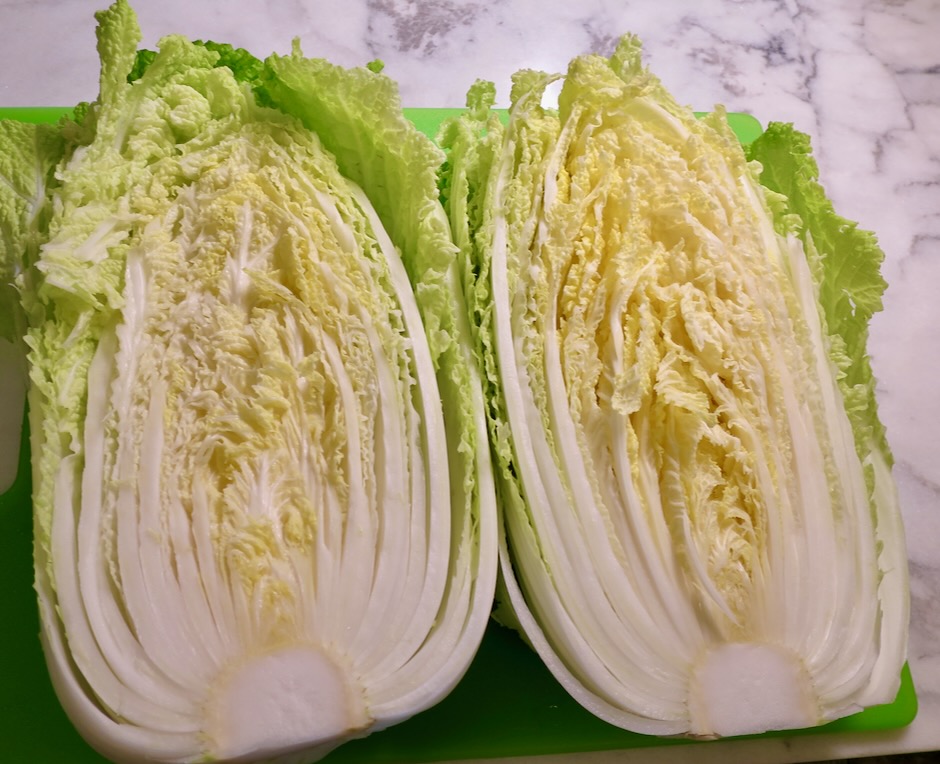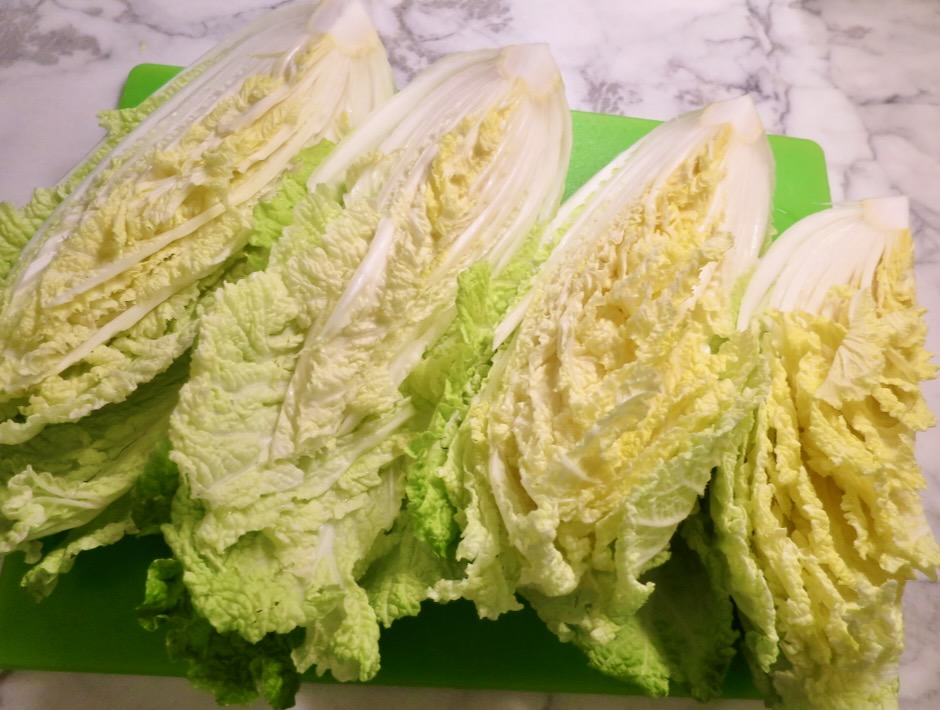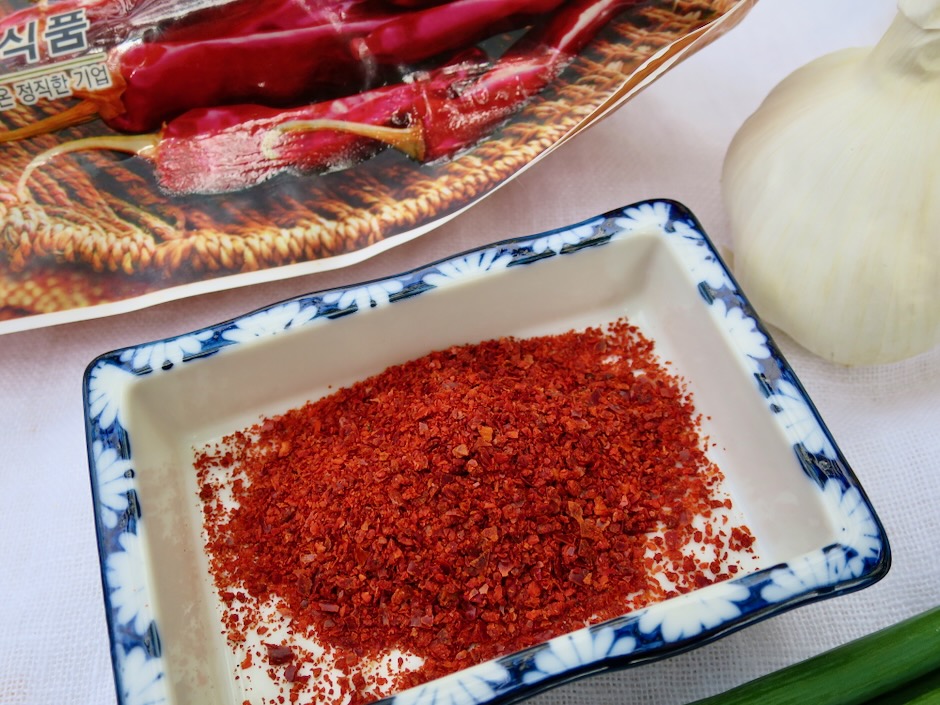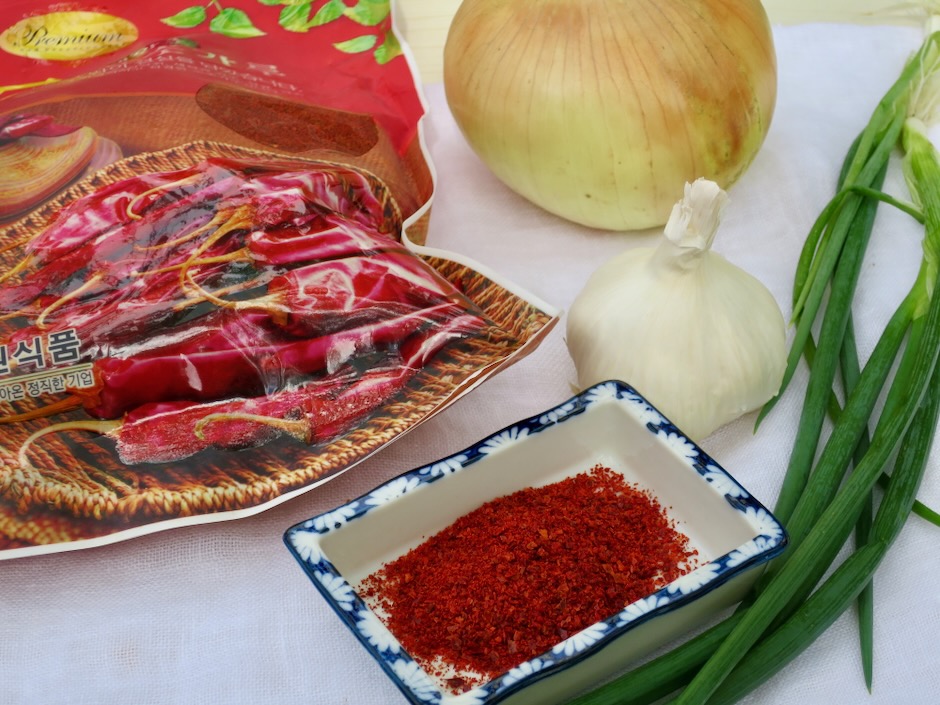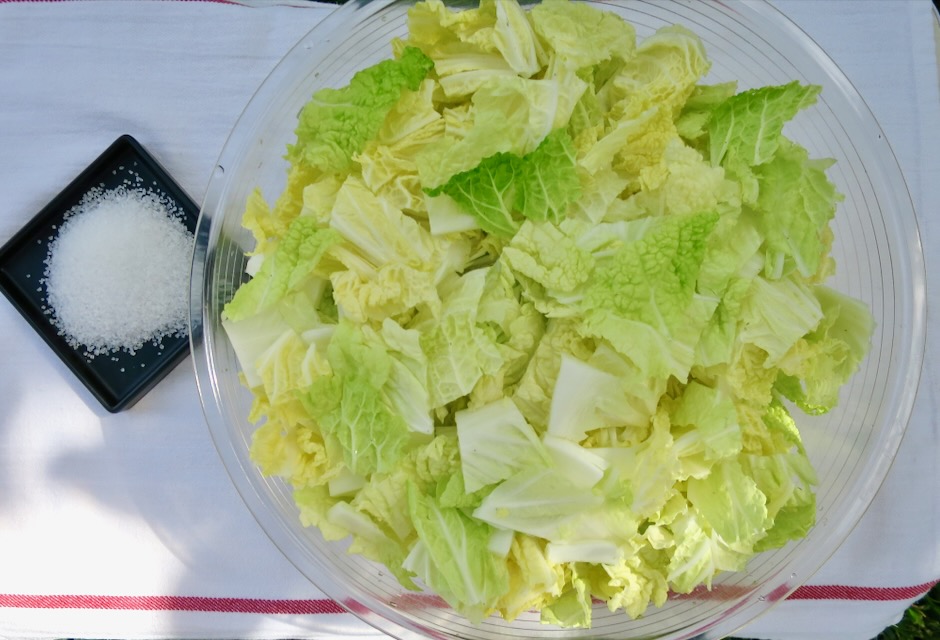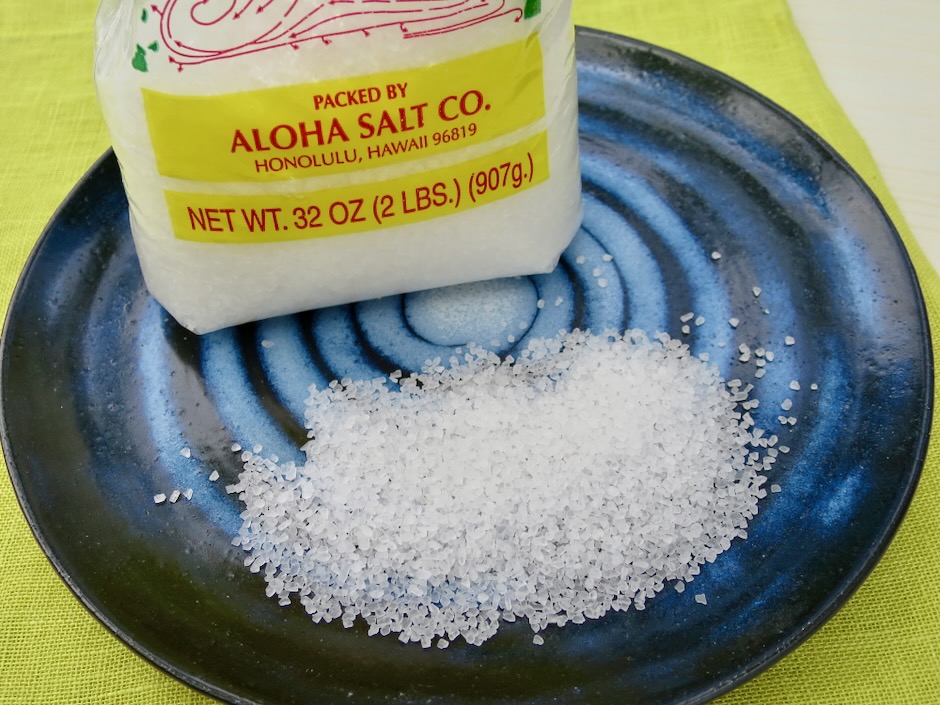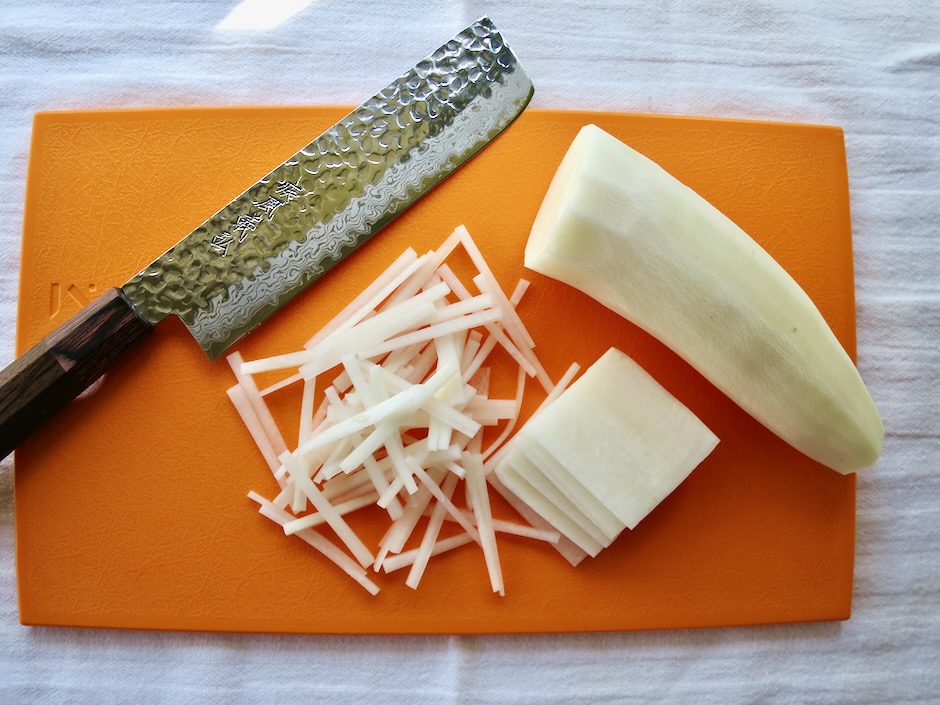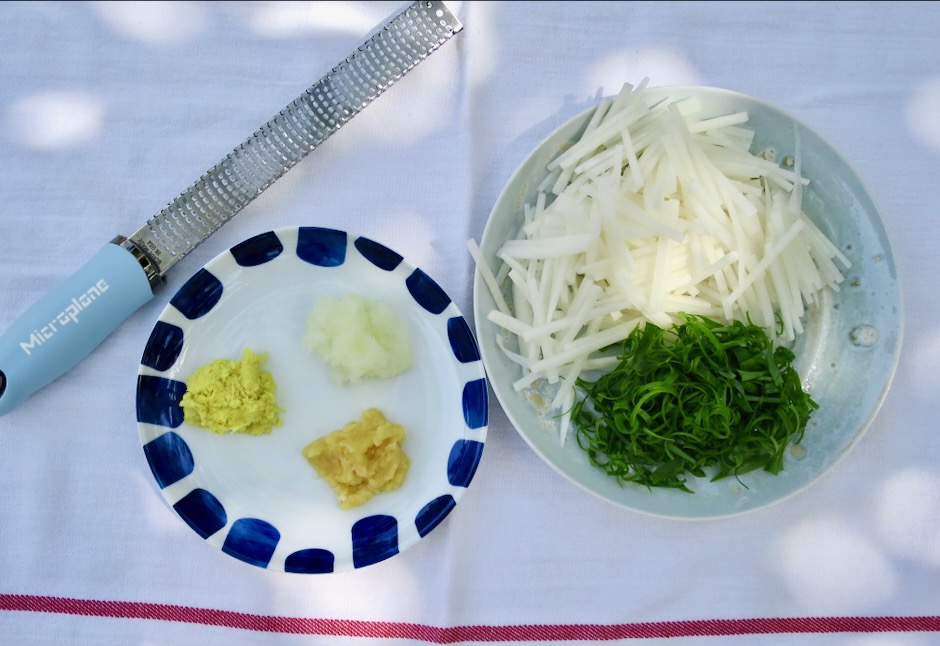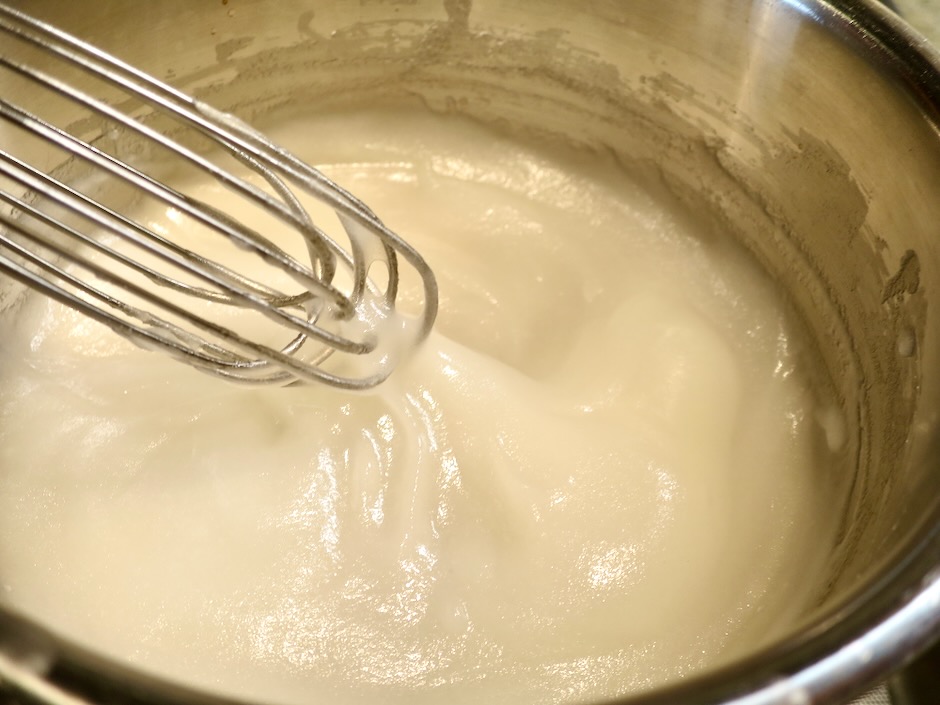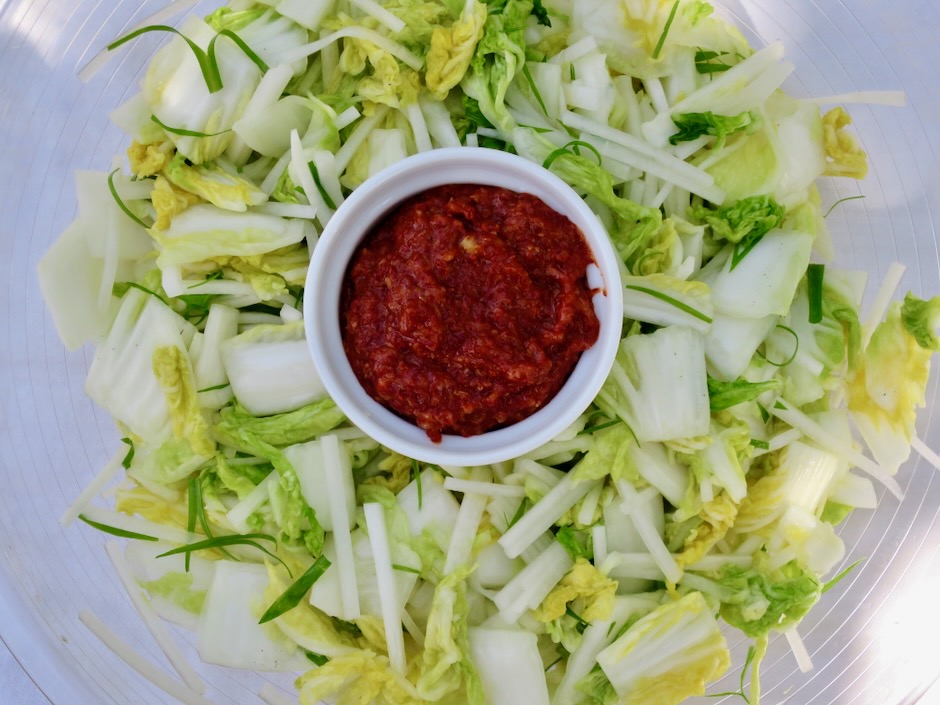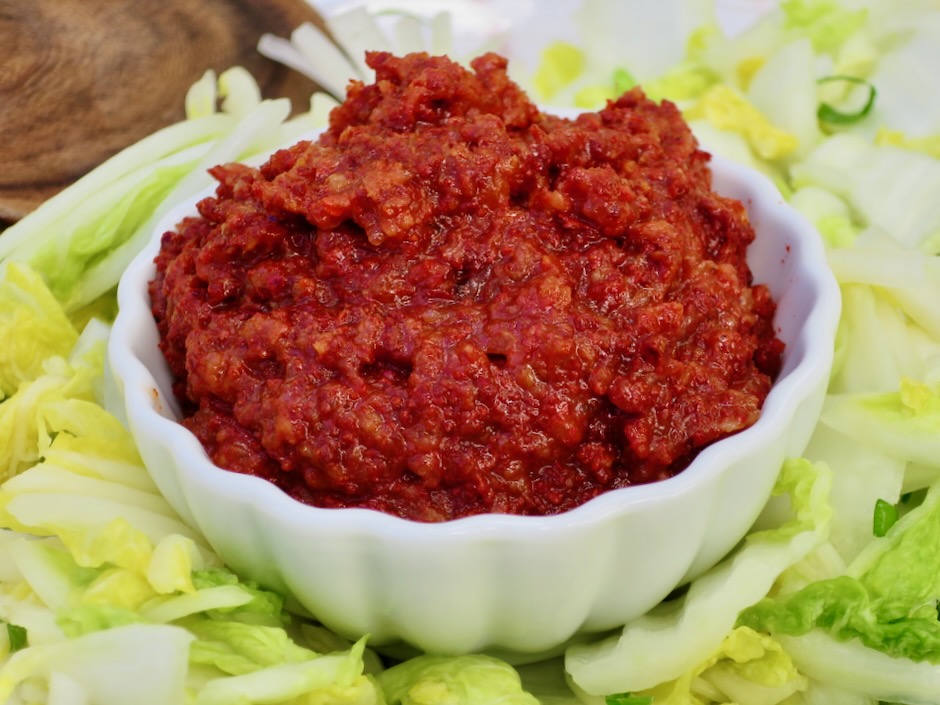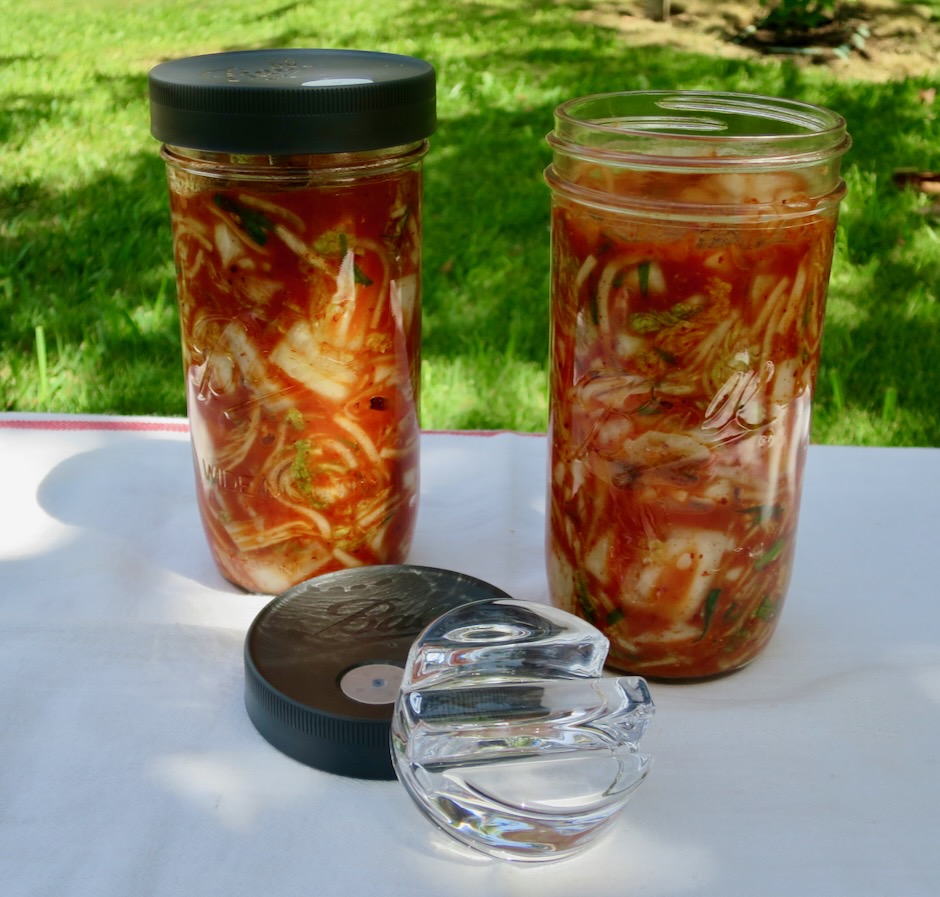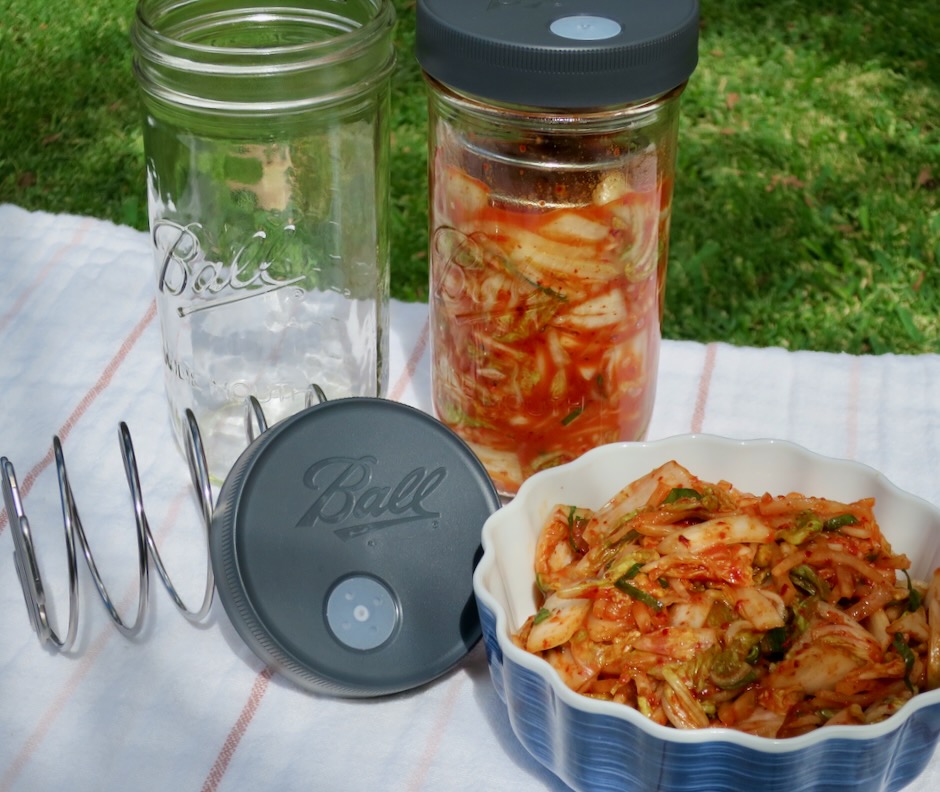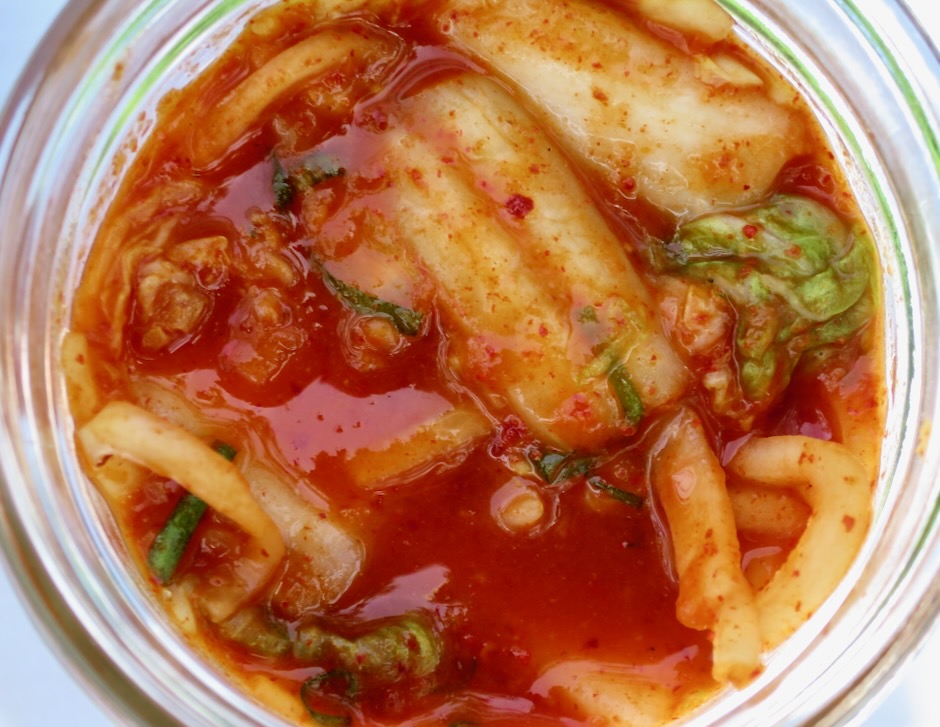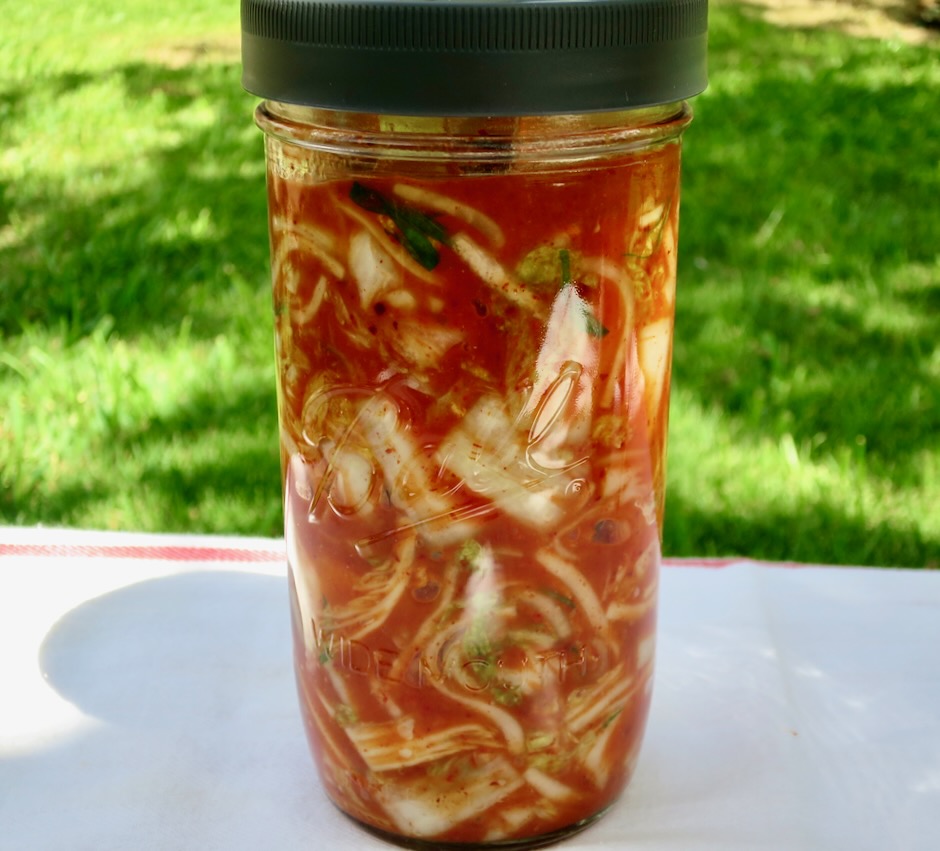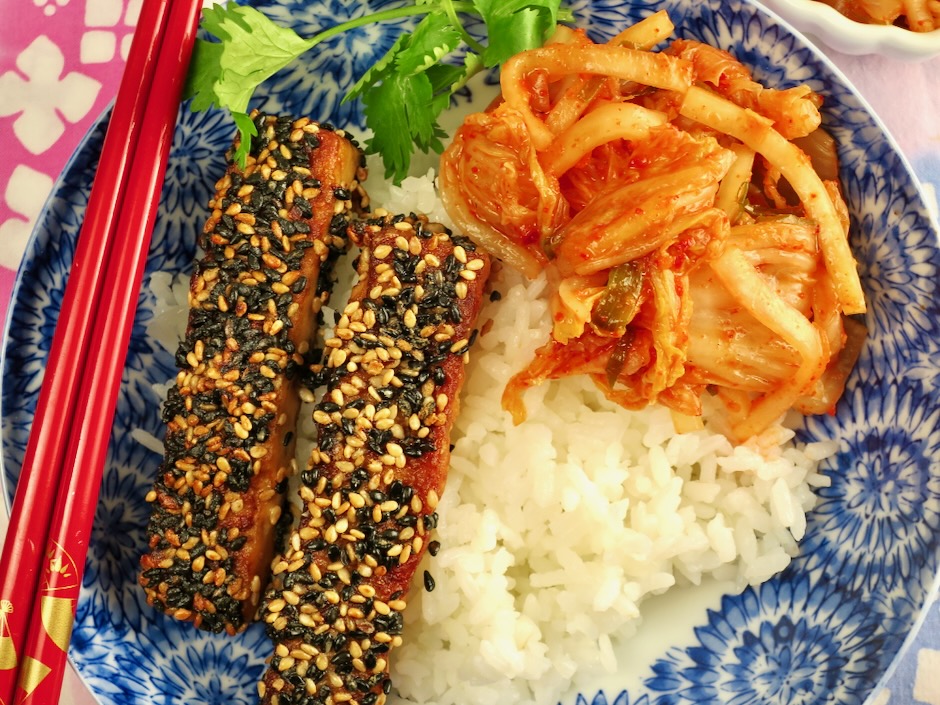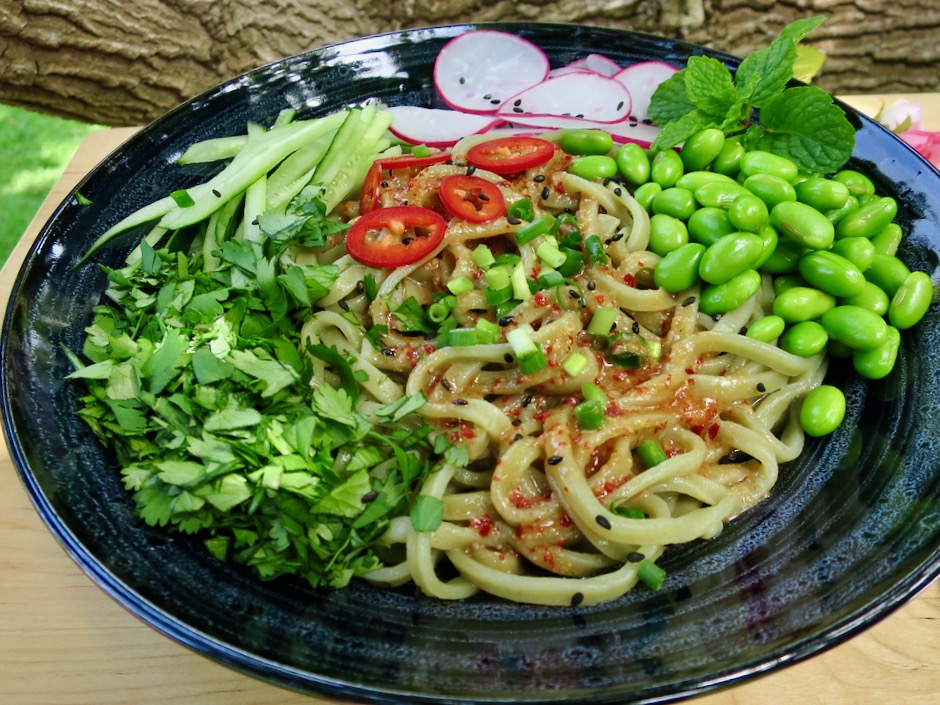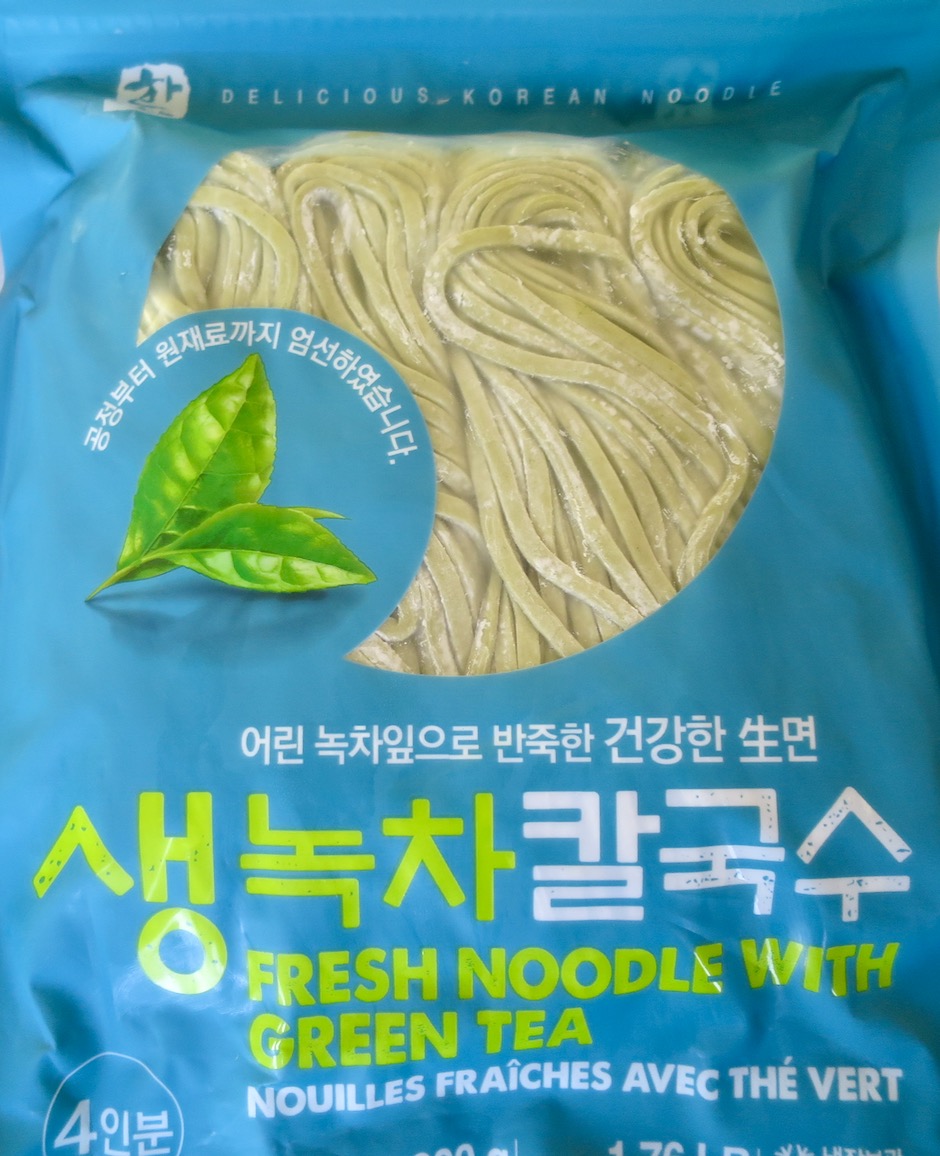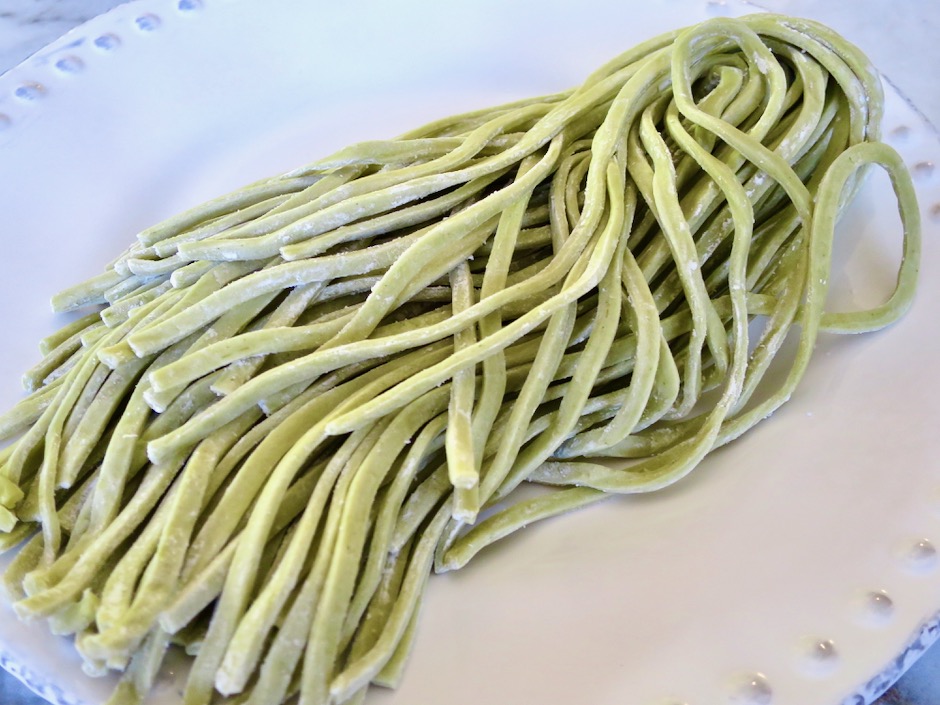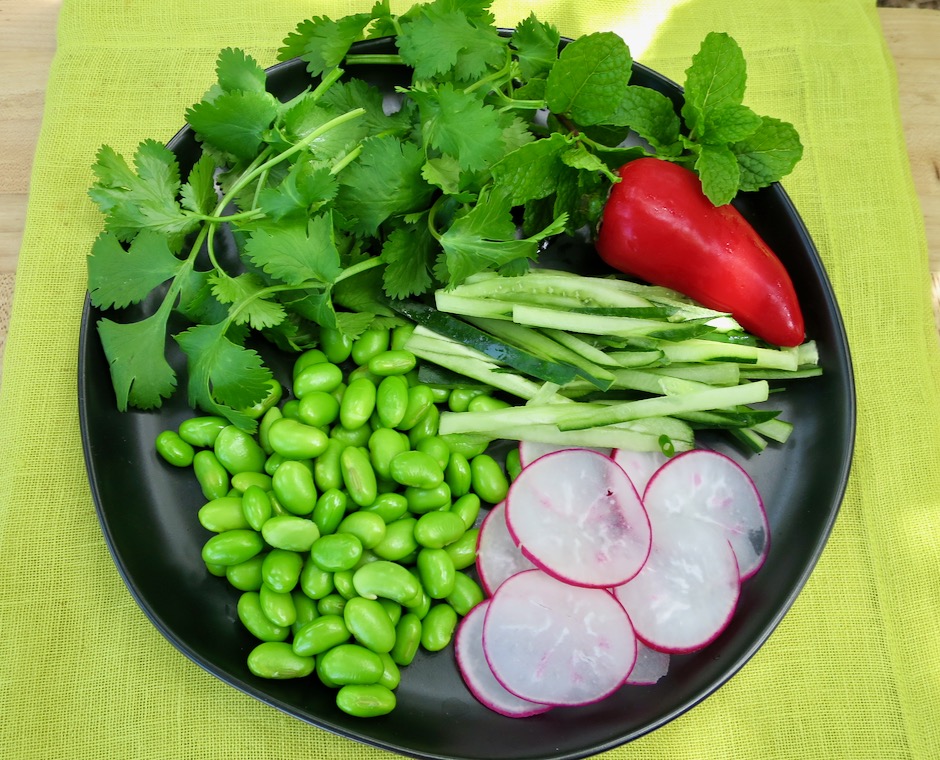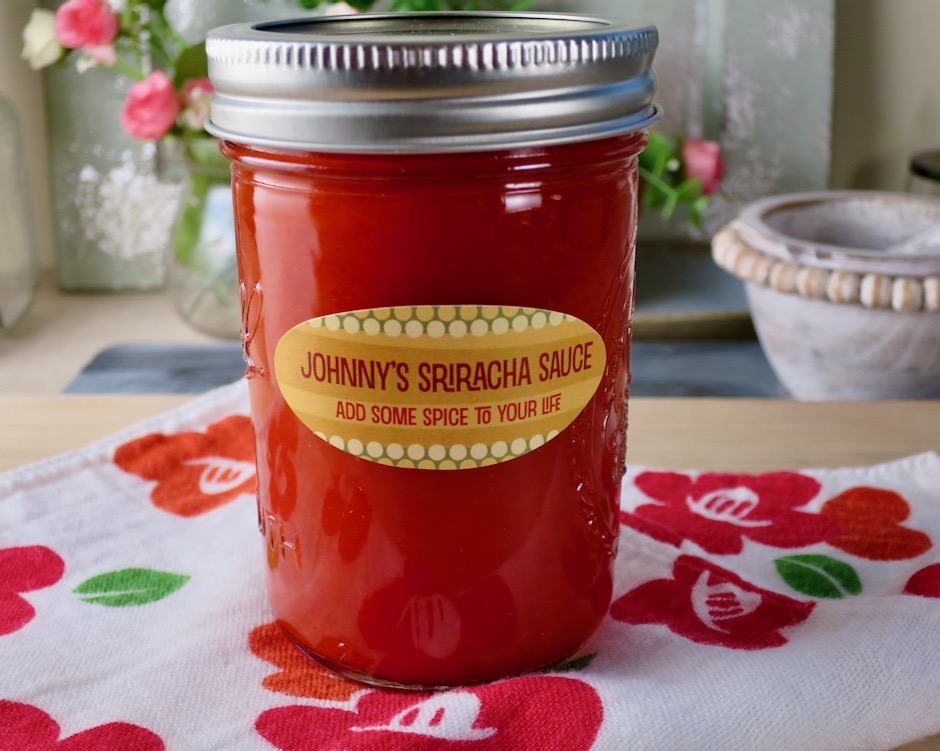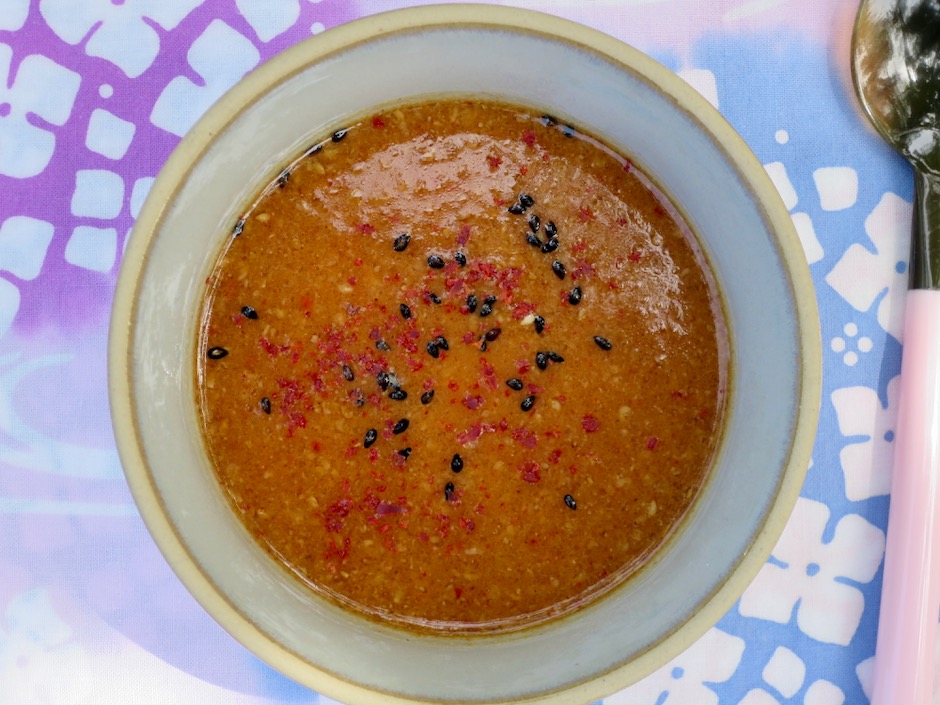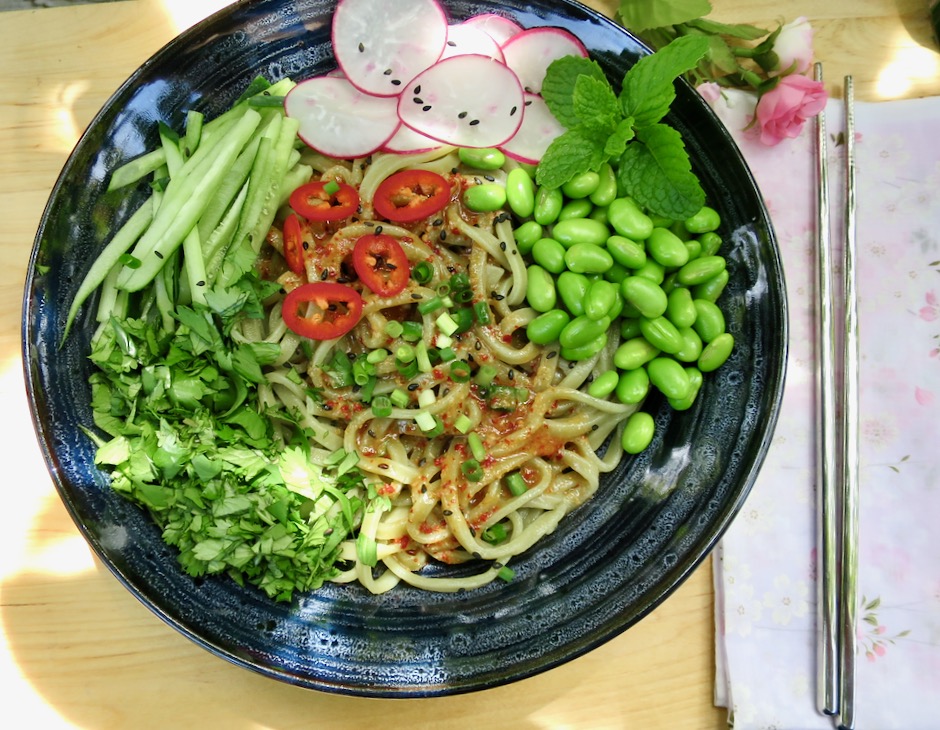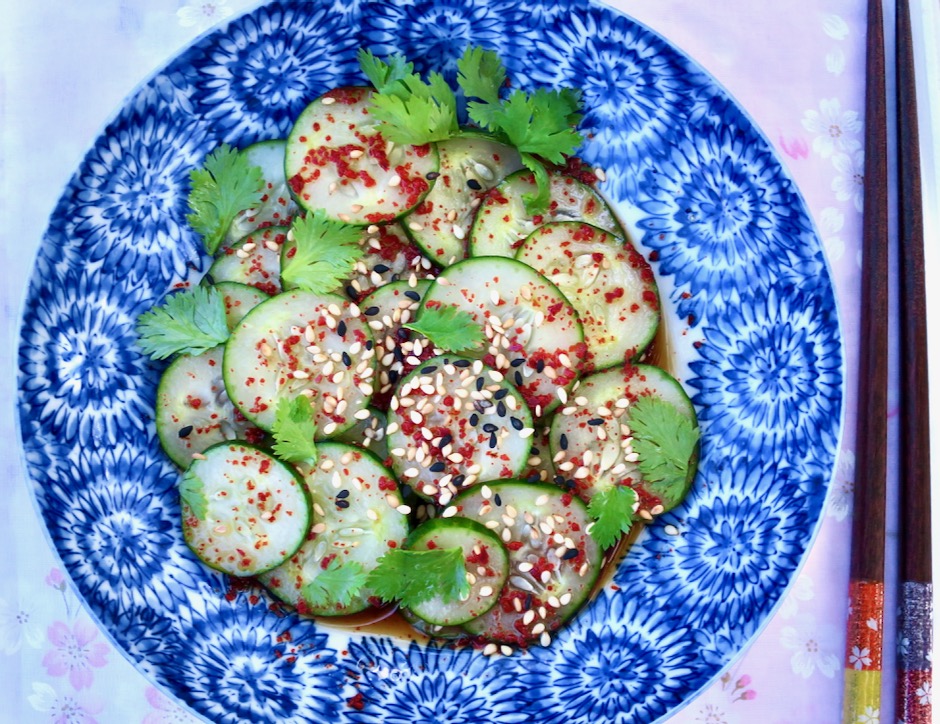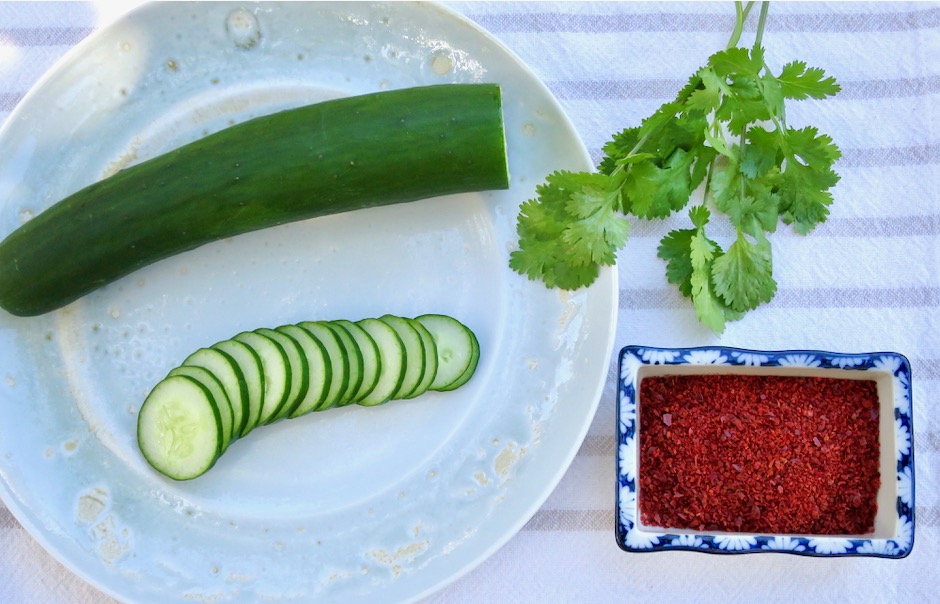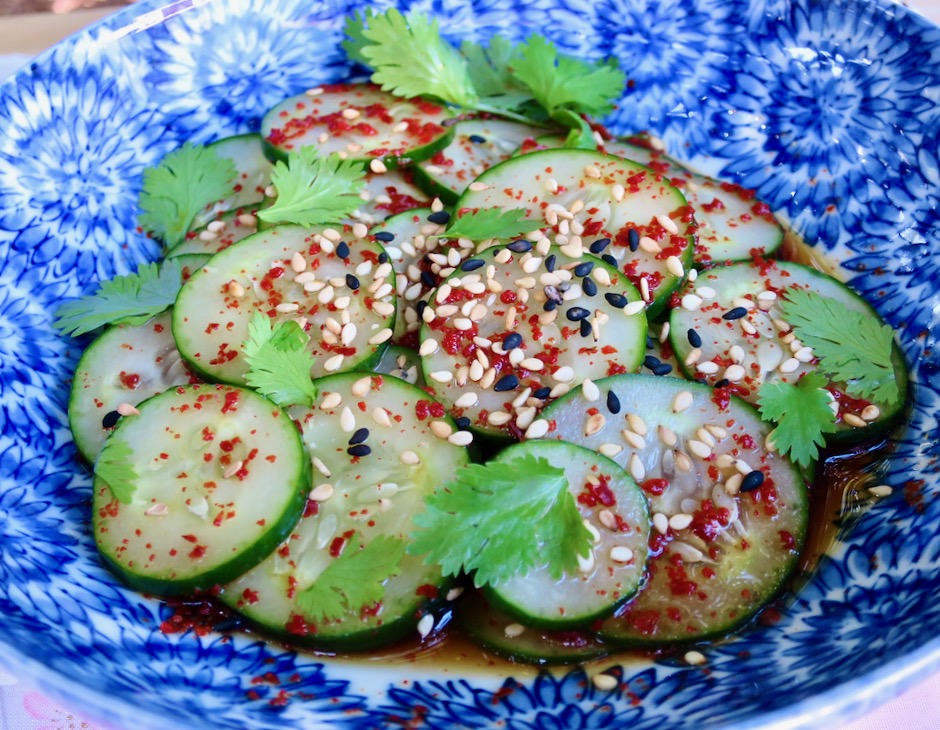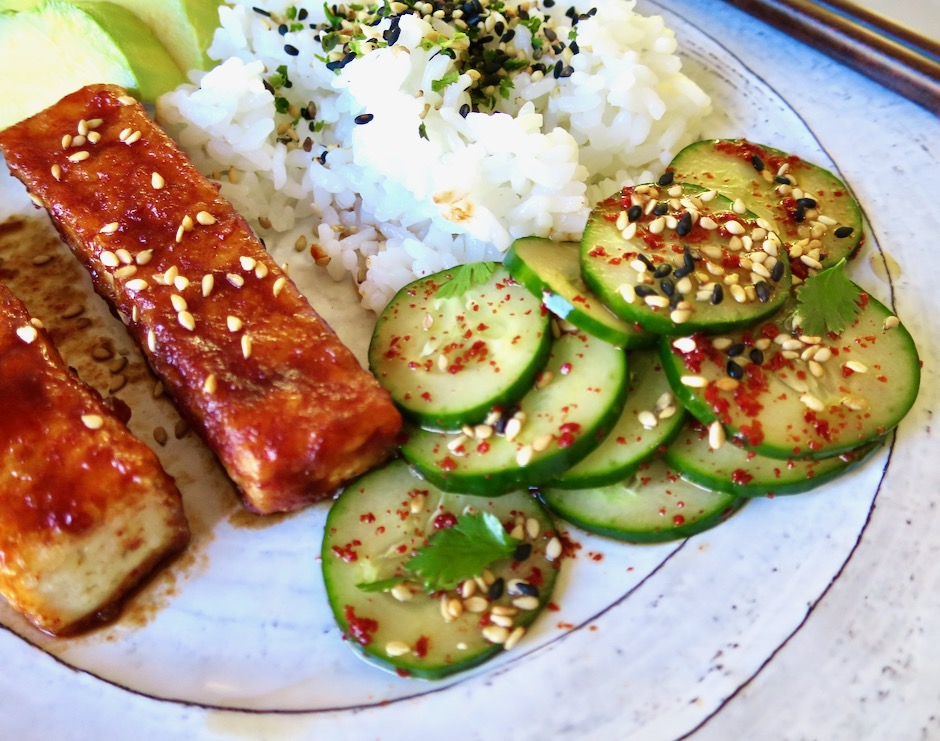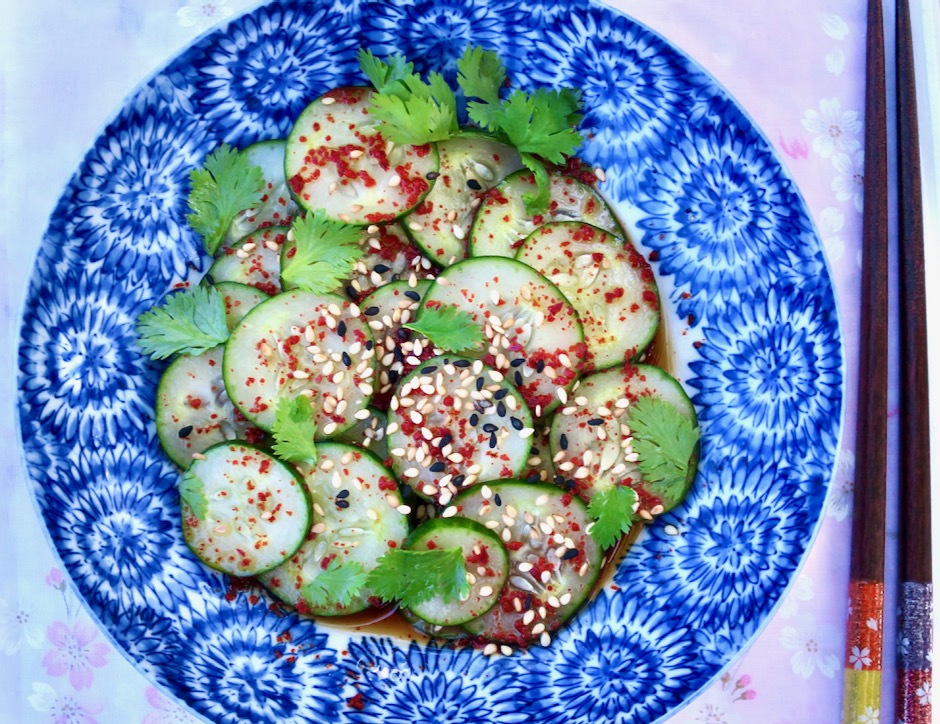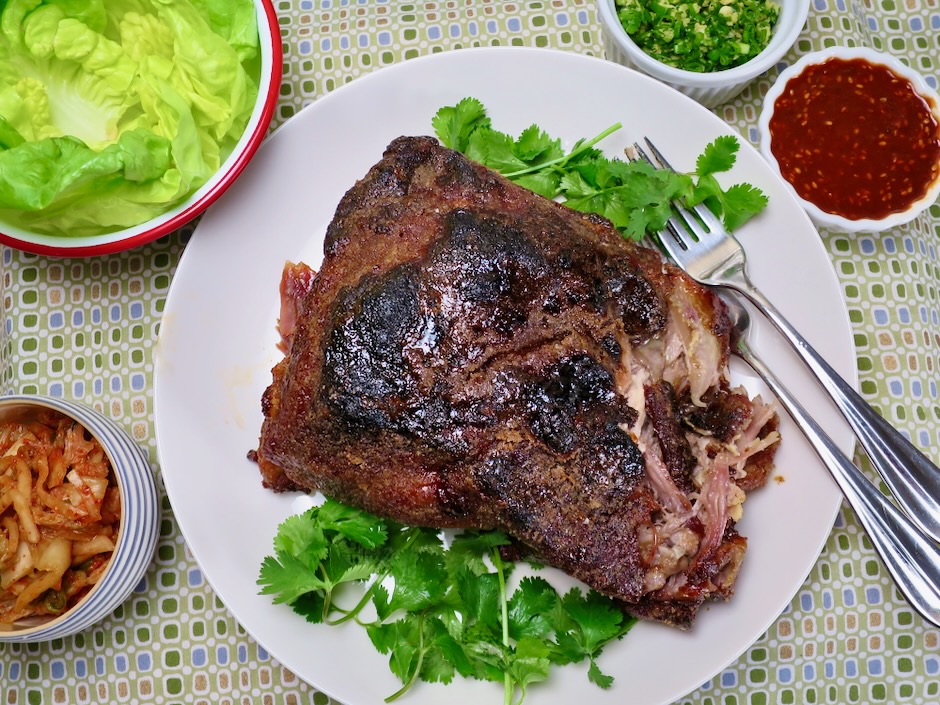
Bo Ssam is the ultimate dinner party centerpiece. It is a popular Korean pork dish that once cooked, is shredded and wrapped in vegetables (ssam) in this case, butter lettuce leaves. The slow roasted pork butt (shoulder) comes out of the oven with a crisp exterior and meltingly tender, shreddable interior. When brought to the table, all eyes will be focused on the Bo Ssam as it is absolutely stunning. Mahalo to David Chang for sharing his recipe on the NYT Cooking site which inspired me to make this dish (numerous times).

The pork and sauces are wrapped in a crisp lettuce leaf then folded before consuming. Steamed white rice or onigiri and kimchi are the perfect sides to go along with this dish.
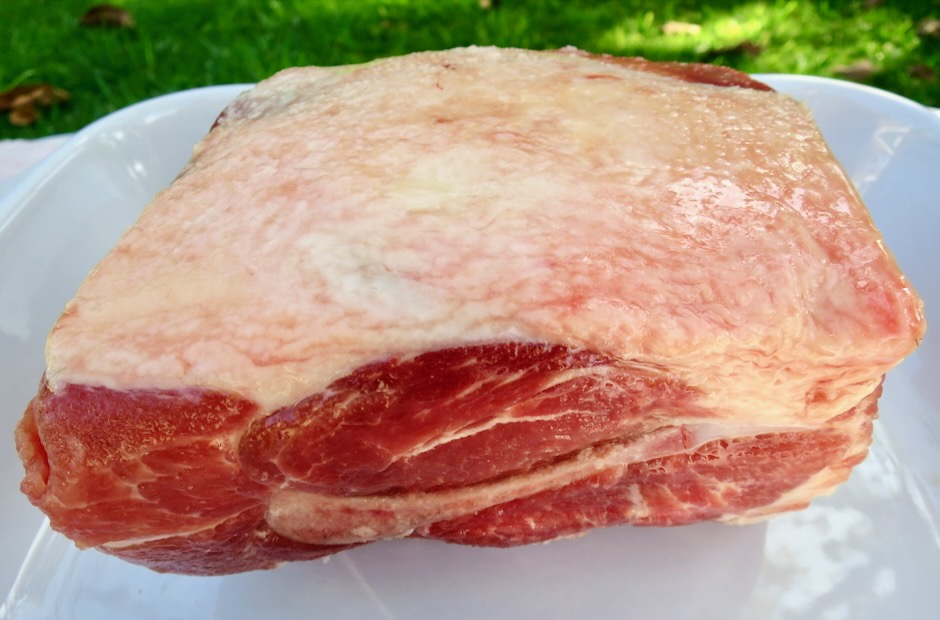
For this recipe you’ll want to have a nice layer of fat on one side of the pork. If you purchase one that has an extra thick layer of fat, trim some of it off. The pork cooks fat side up and becomes the most delicious, crispy, salty and sweet crust you will ever encounter.
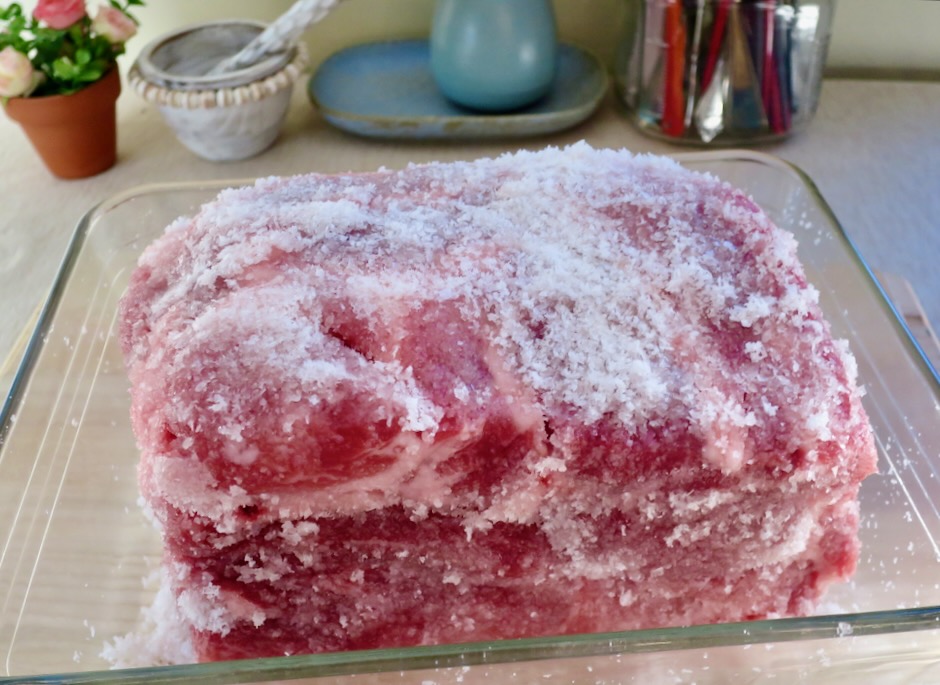
The pork is cured in a mixture of kosher salt and white sugar. This will create a very moist and flavorful Bo Ssam. Plan a bit in advance as the pork needs to be cured overnight (minimum 6 hours).
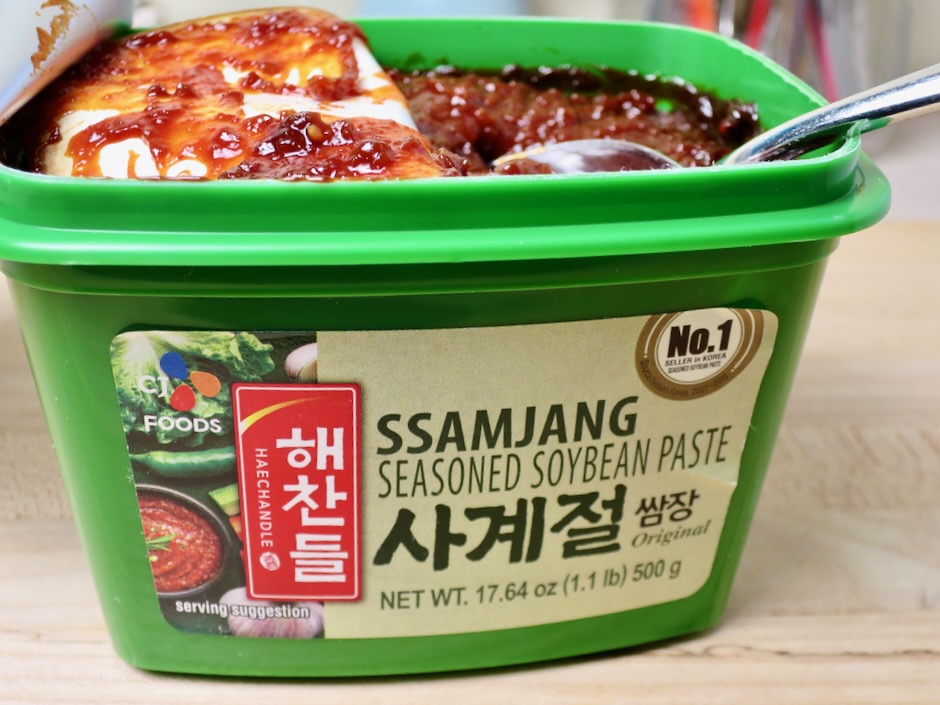
Ssamjang is a Korean soybean paste and is the basis for the Ssam sauce. I once tried replacing it with miso paste since I did not have ssamjang on hand. It was fine but after making the sauce with ssamjang I understood how important this ingredient is in order to create an authentic sauce for the Bo Ssam. All Korean markets as well as Amazon carry ssamjang.
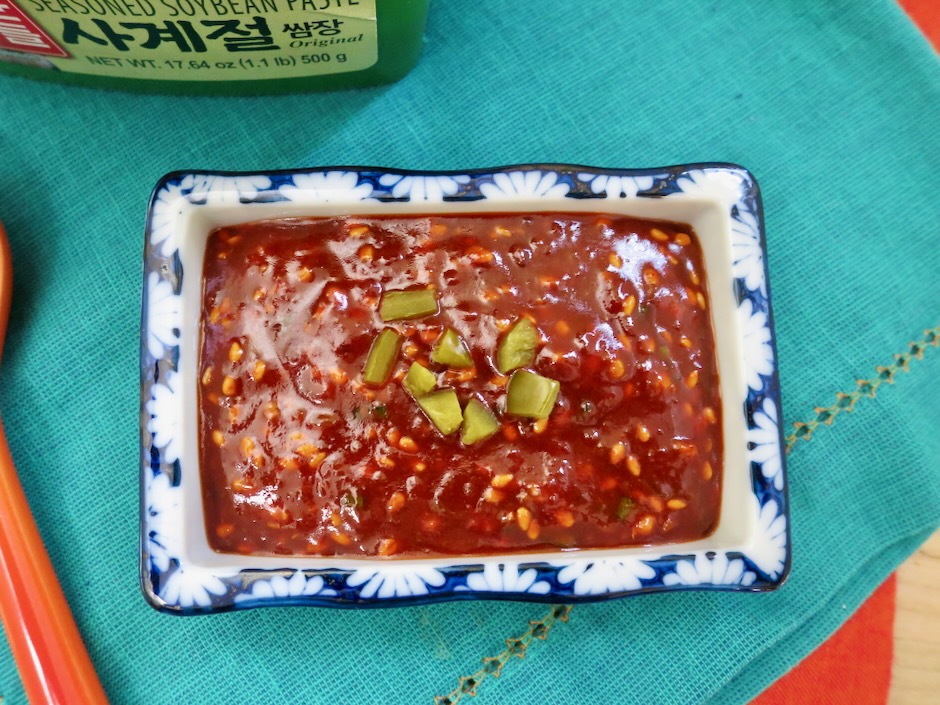
While the pork is roasting and filling your home with the most incredible aroma, prepare your sauces for the table.
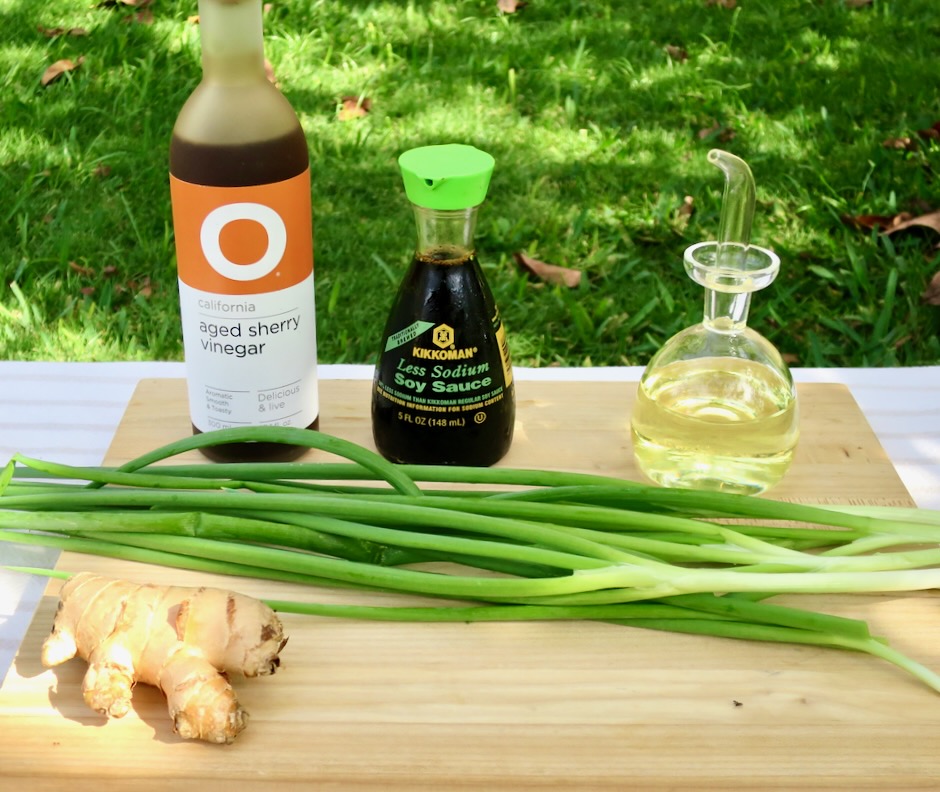
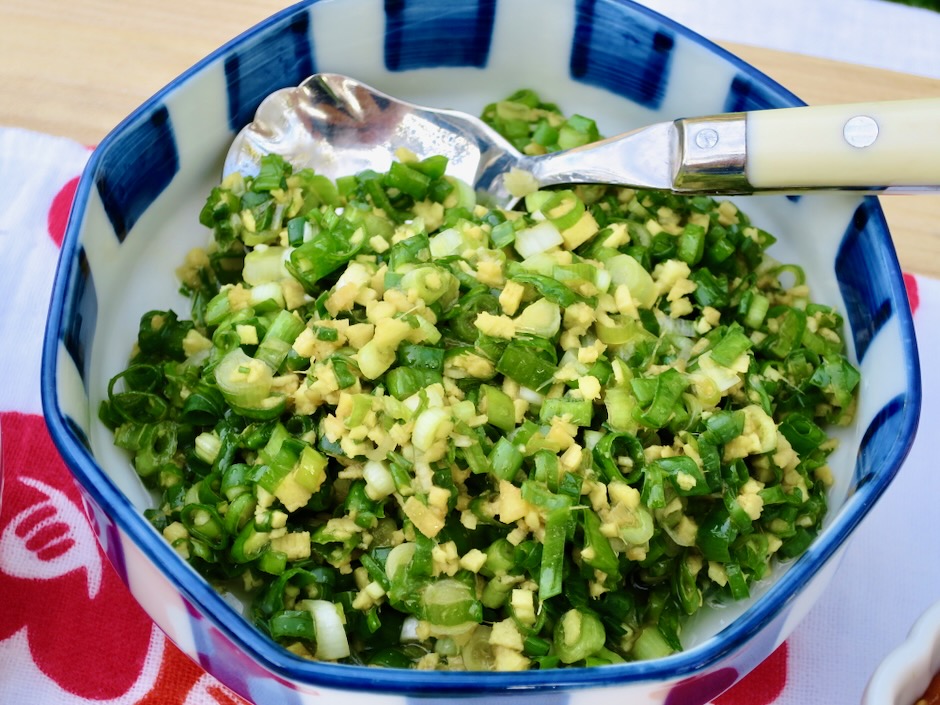
The scallion ginger sauce is so refreshing. It is the perfect accompaniment to the rich, flavorful pork. Make a double batch for leftovers.
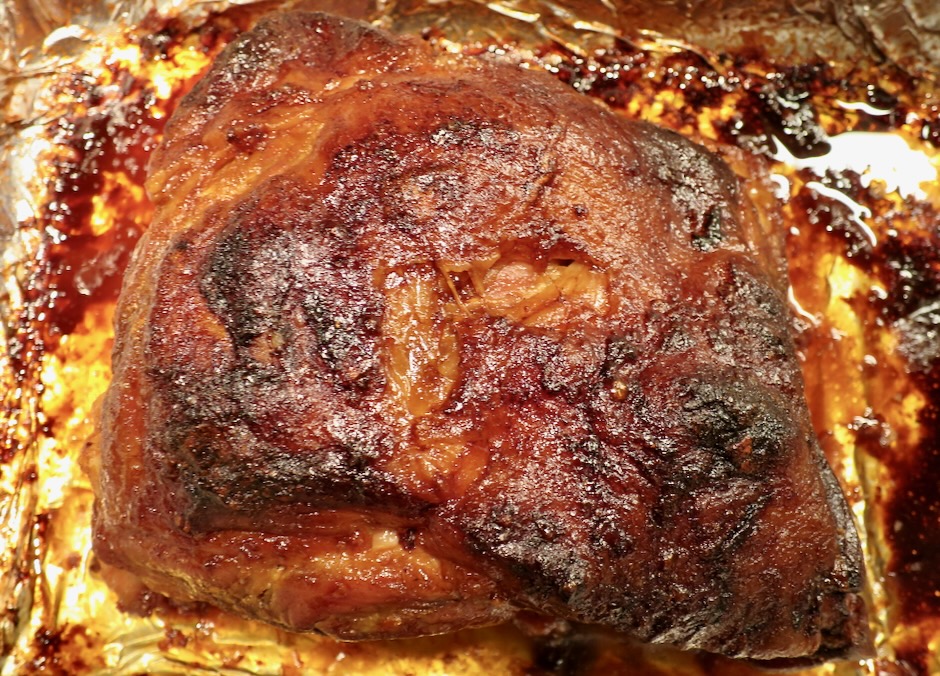
Look at this gorgeous pork roast. Can’t wait to eat!

I found these little bao buns at Island Grocery here on Maui. Many Asian markets carry them either stored in the freezer or fresh on the display counter. They are optional for this meal but make for a tasty addition to lettuce. However, butter lettuce is essential so purchase the freshest available. Crisp them up in an ice water bath if you feel they need a quick refresh.
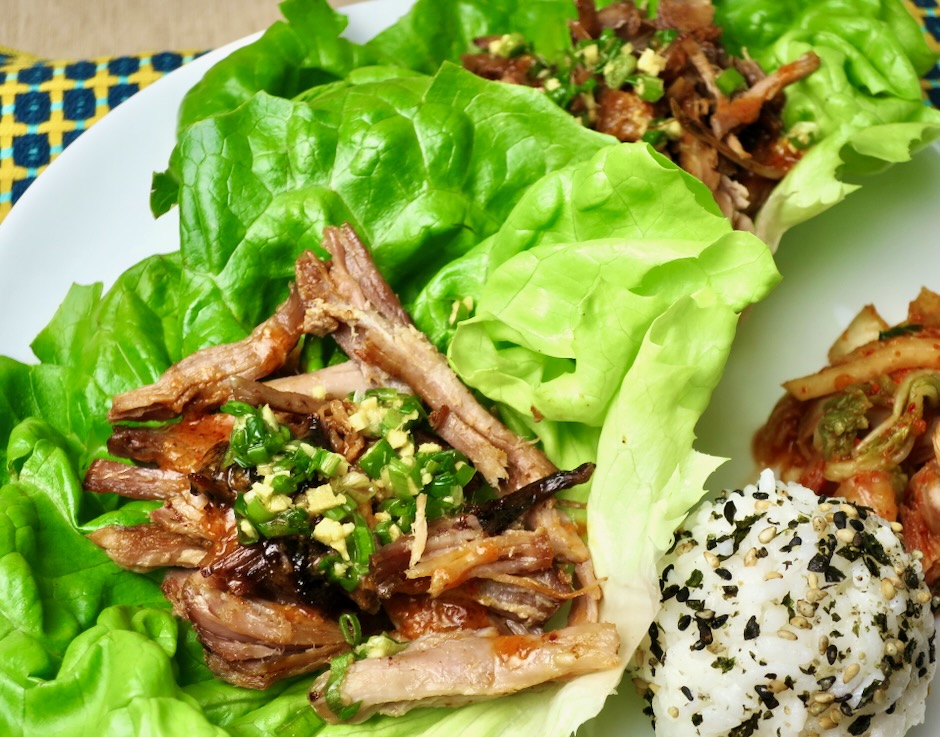
- Pork Butt: 4-5 pound bone in pork butt (pork shoulder)
- ⅓ cup kosher salt (I used Diamond Crystal)
- ⅓ cup white sugar
- 3 tablespoons light brown sugar
- Ginger-Scallion Sauce: 1¼ cups thinly sliced scallions, both green and white parts
- ¼ cup very finely minced fresh ginger
- 2 tablespoons neutral oil
- ¾ teaspoon soy sauce
- 1 scant teaspoon sherry vinegar
- ¼ teaspoon kosher salt
- Ssam Sauce: 4 tablespoons ssamjang paste
- 2 tablespoons gochujang
- 1 tablespoon honey
- 1 tablespoon sesame oil
- 2 teaspoons sherry vinegar
- 2 scallions, thinly slcied
- 1 small garlic clove, finely minced
- 2 teaspoons roasted sesame seeds
- Accompaniments: steamed short or medium grain white rice
- butter lettuce, leaves separated, washed and dried
- steamed bao buns (optional)
- kimchi
- Special ingredients: Ssamjang paste, sherry vinegar
- Place the pork in a large, shallow glass baking dish. Mix the salt and white sugar together in a small bowl. Rub the mixture all over the pork. Cover with plastic wrap and place in the refrigerator for at least 6 hours, or overnight. I put my pork in the refrigerator the evening before I served it, for a total of about 14 hours.
- When you are ready to cook the pork, heat oven to 300 degrees. Remove the pork from the refrigerator and brush off any excess sugar and salt mixture with paper towels. Discard juices collected in the pan. Place pork skin side up in a roasting pan (heavy duty foil lined pan makes for easy clean up). Cook for 6 - 6½ hours, basting hourly with pan juices. The cooking time will depend on the size of your pork. The meat should easily pull apart with the tines of a fork when done. At this point, you may remove the meat from the oven and allow to rest for up to an hour.
- Meanwhile, make the ginger-scallion and ssam sauces. Combine sliced scallions, minced ginger, oil, soy sauce, sherry vinegar, and salt in a medium bowl. Cover and refrigerate until ready to serve. For ssam sauce, whisk together the ssamjang and gochujang paste, honey, sesame oil, and sherry vinegar. Stir in the scallions, garlic and sesame seeds. Cover and refrigerate until ready to serve.
- Just prior to serving, set oven rack to middle position and preheat to 500 degrees. Rub the brown sugar all over the cooked pork. Place in the oven for about 6-8 minutes, or until a dark caramel crust has developed (watch for burning). Transfer to a large platter. To serve, shred some of the pork and place on the side of the platter. Allow everyone to make their own lettuce (and bao buns if using) wraps with pork and sauces. Serve steamed white rice and kimchi on the side.

